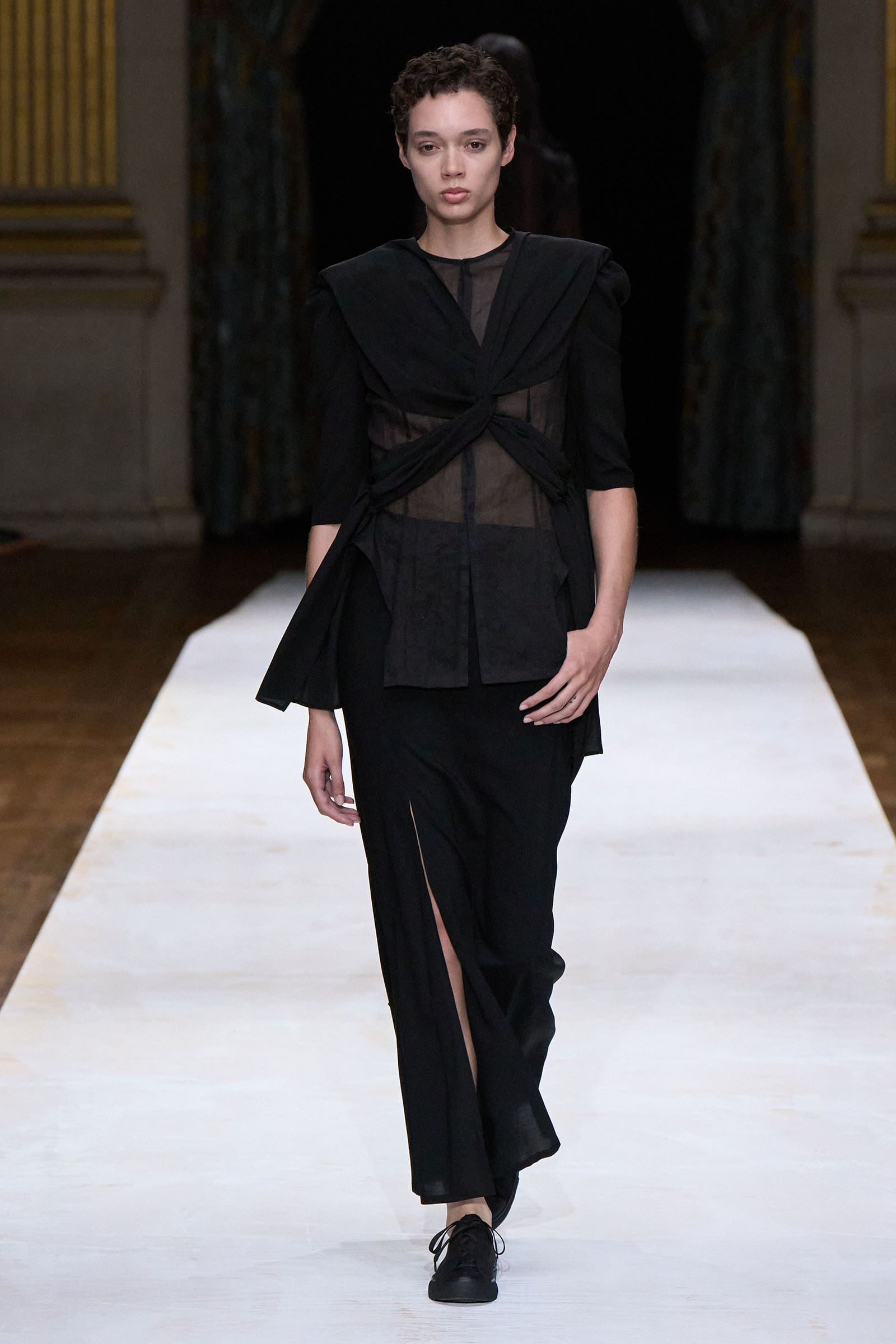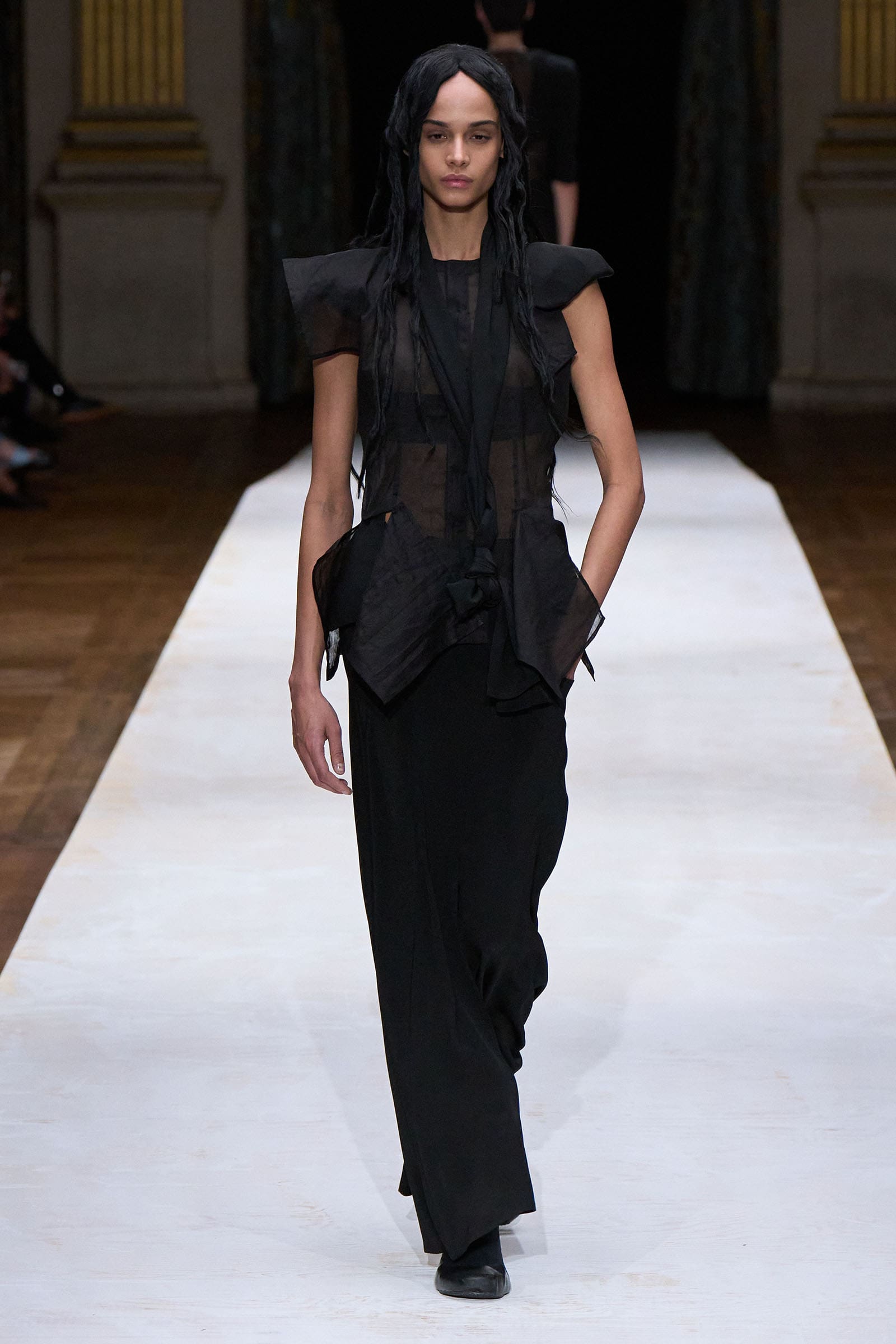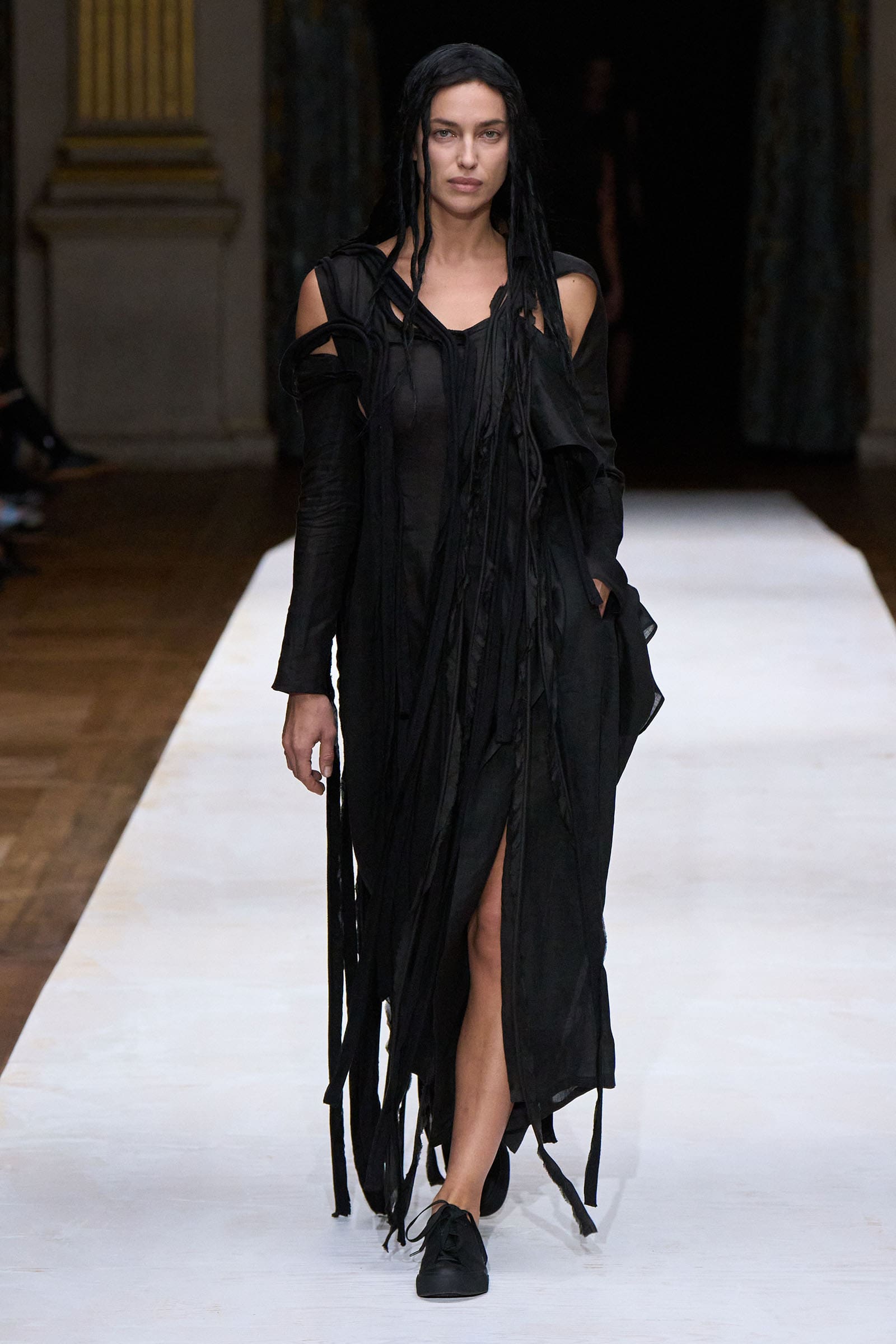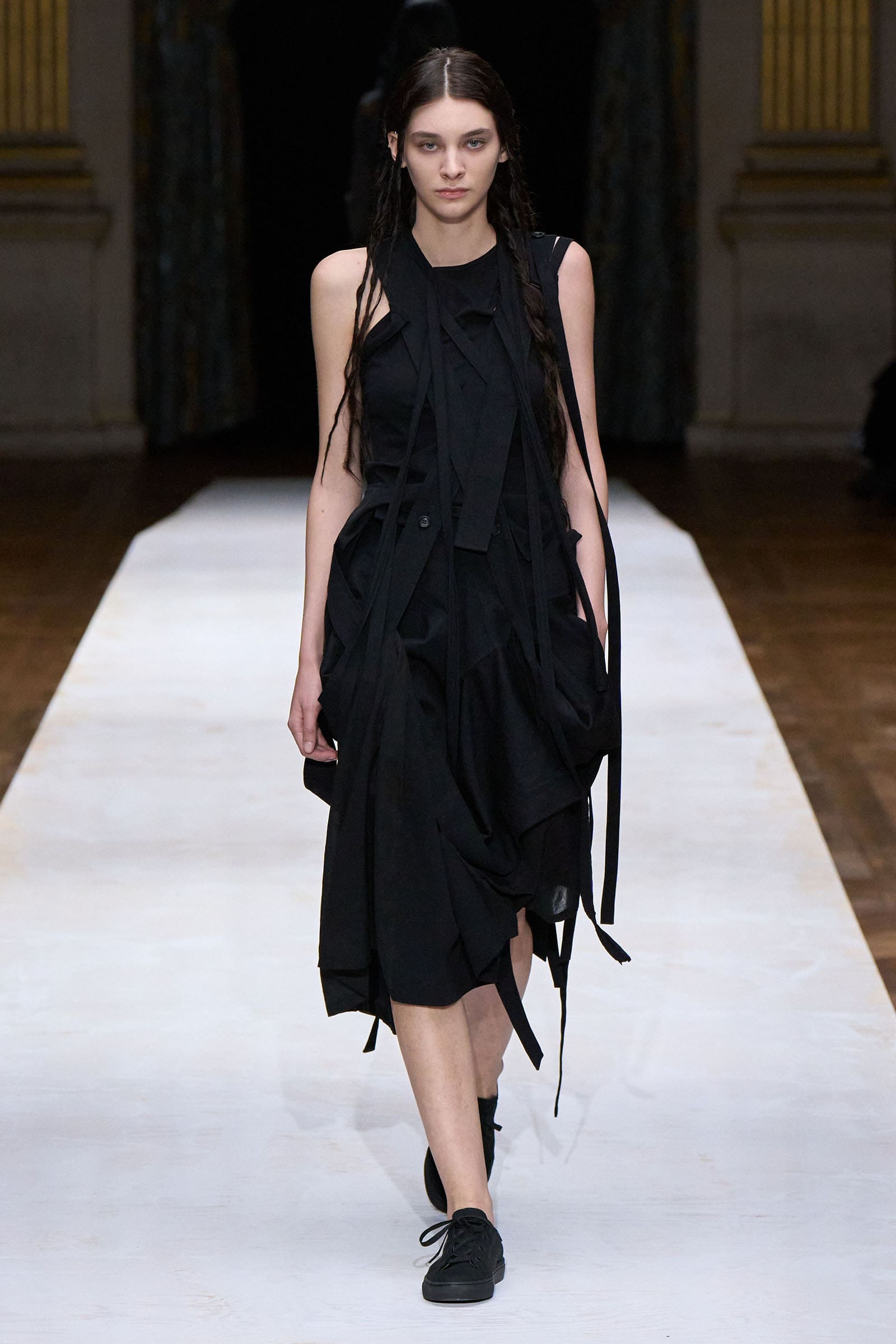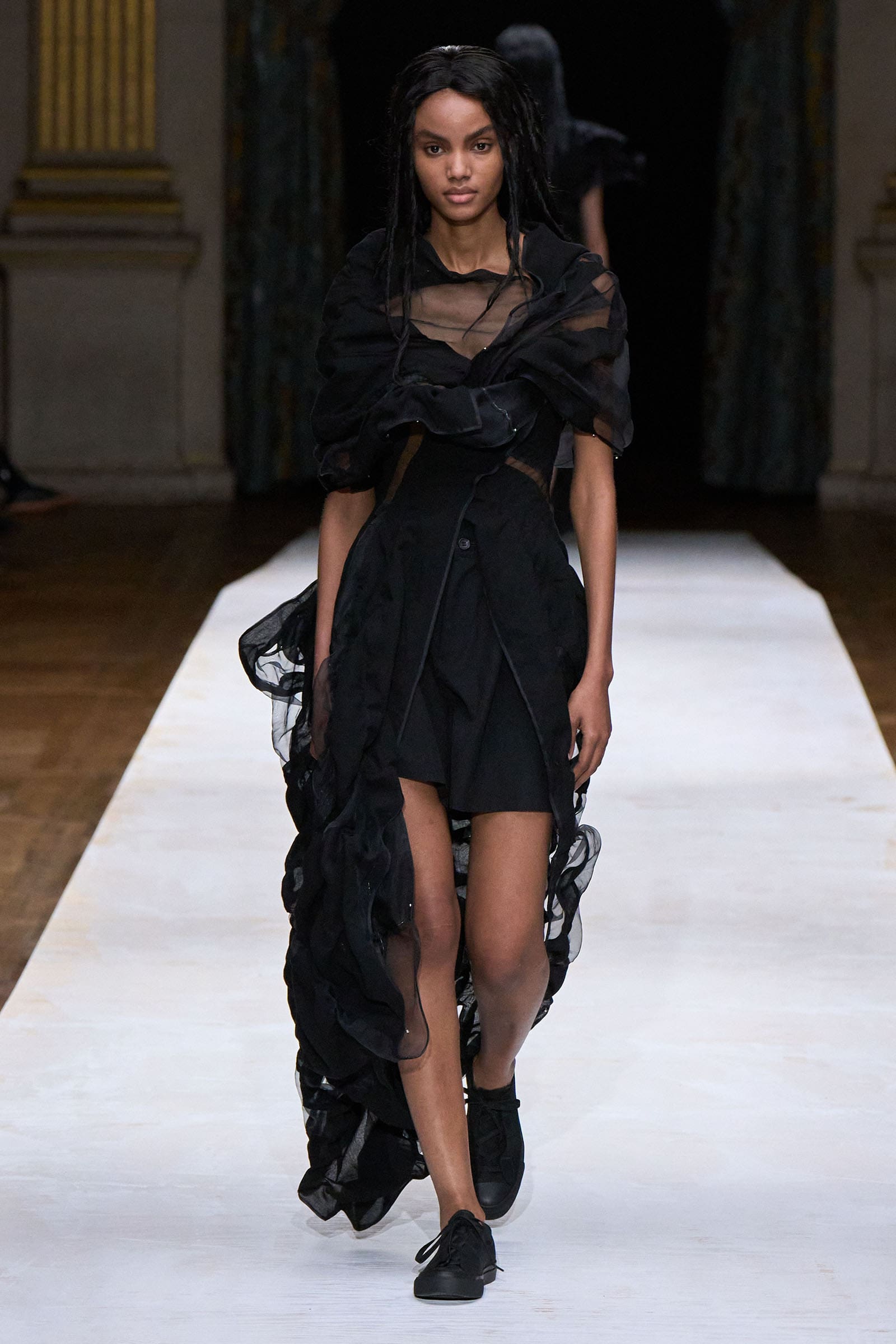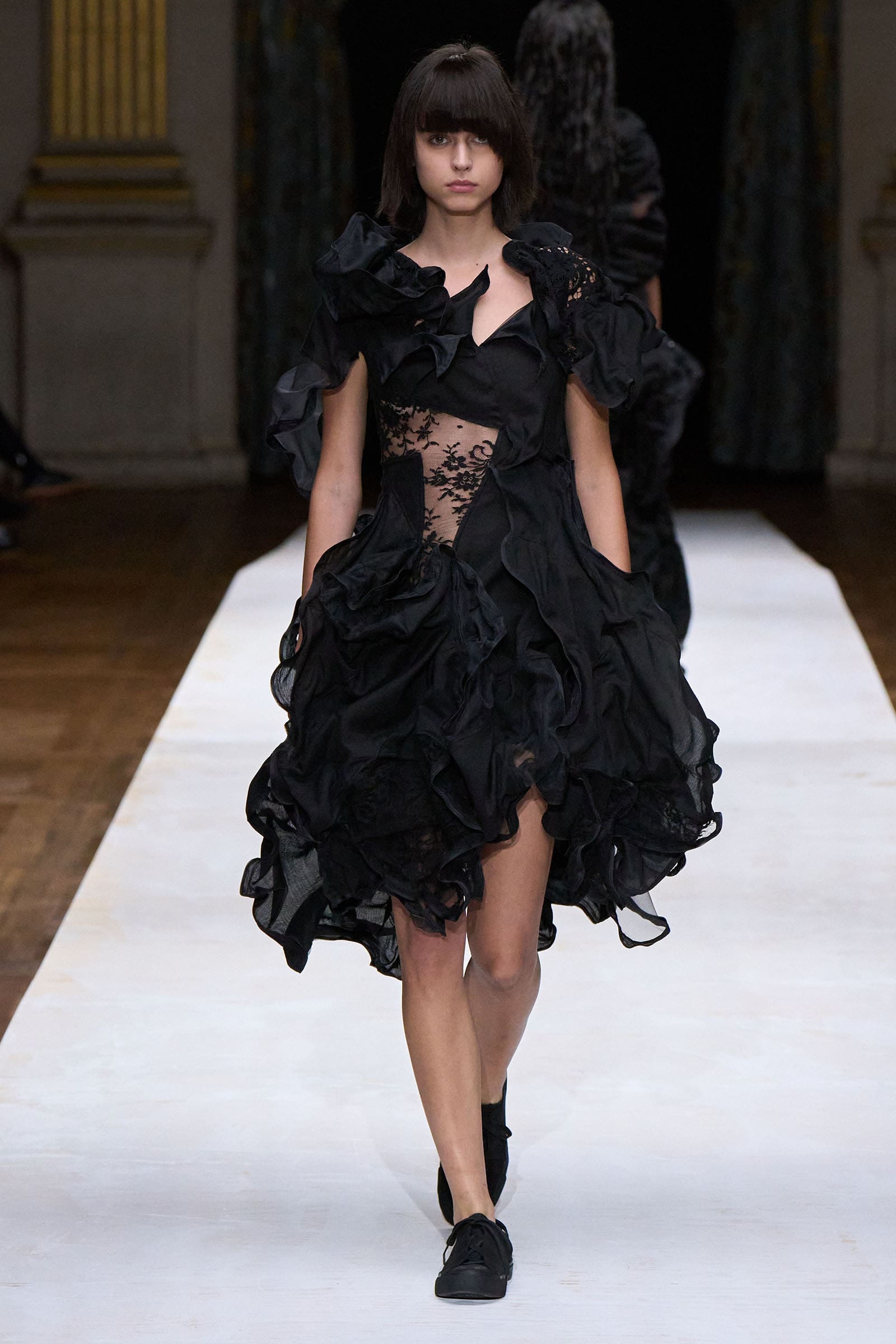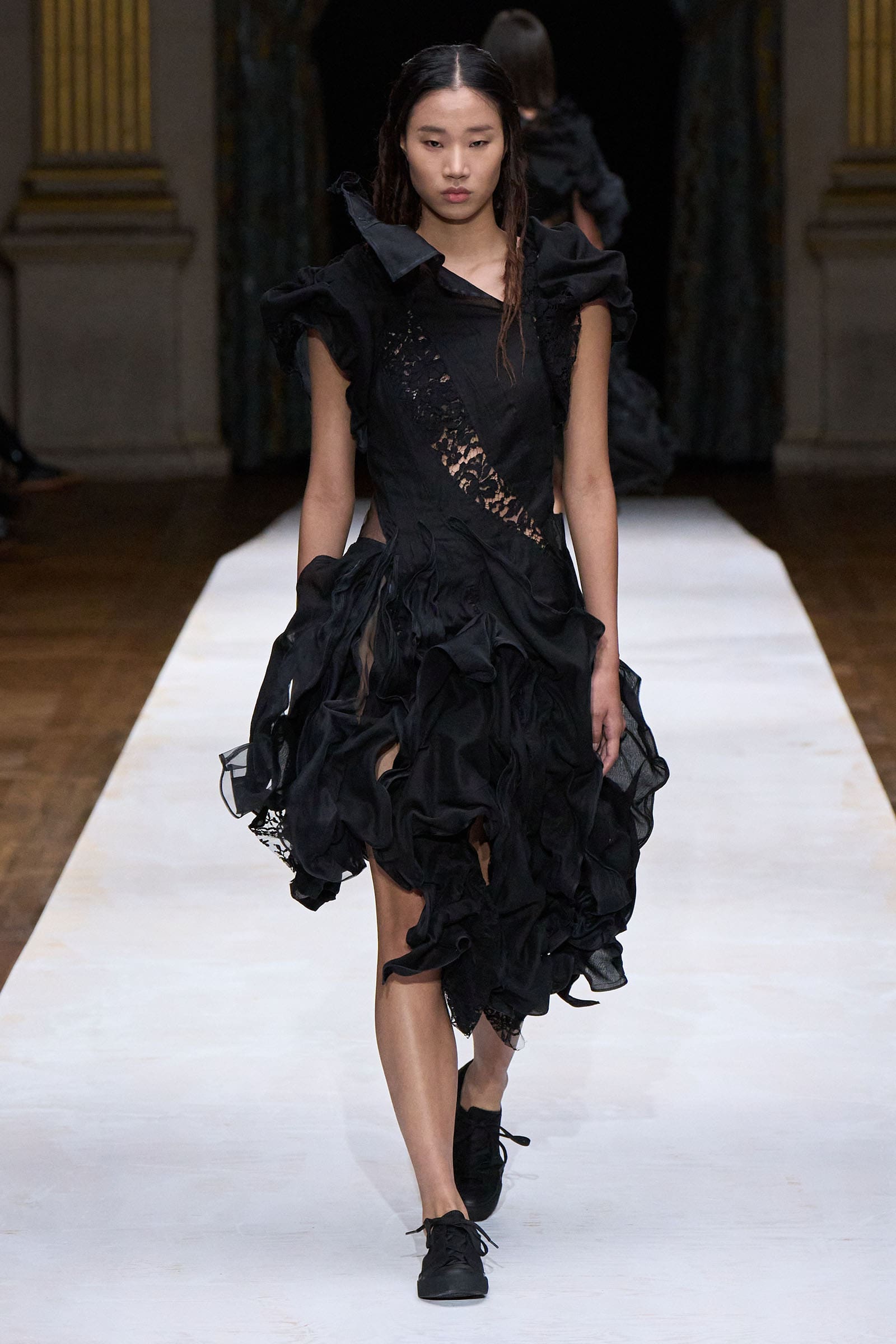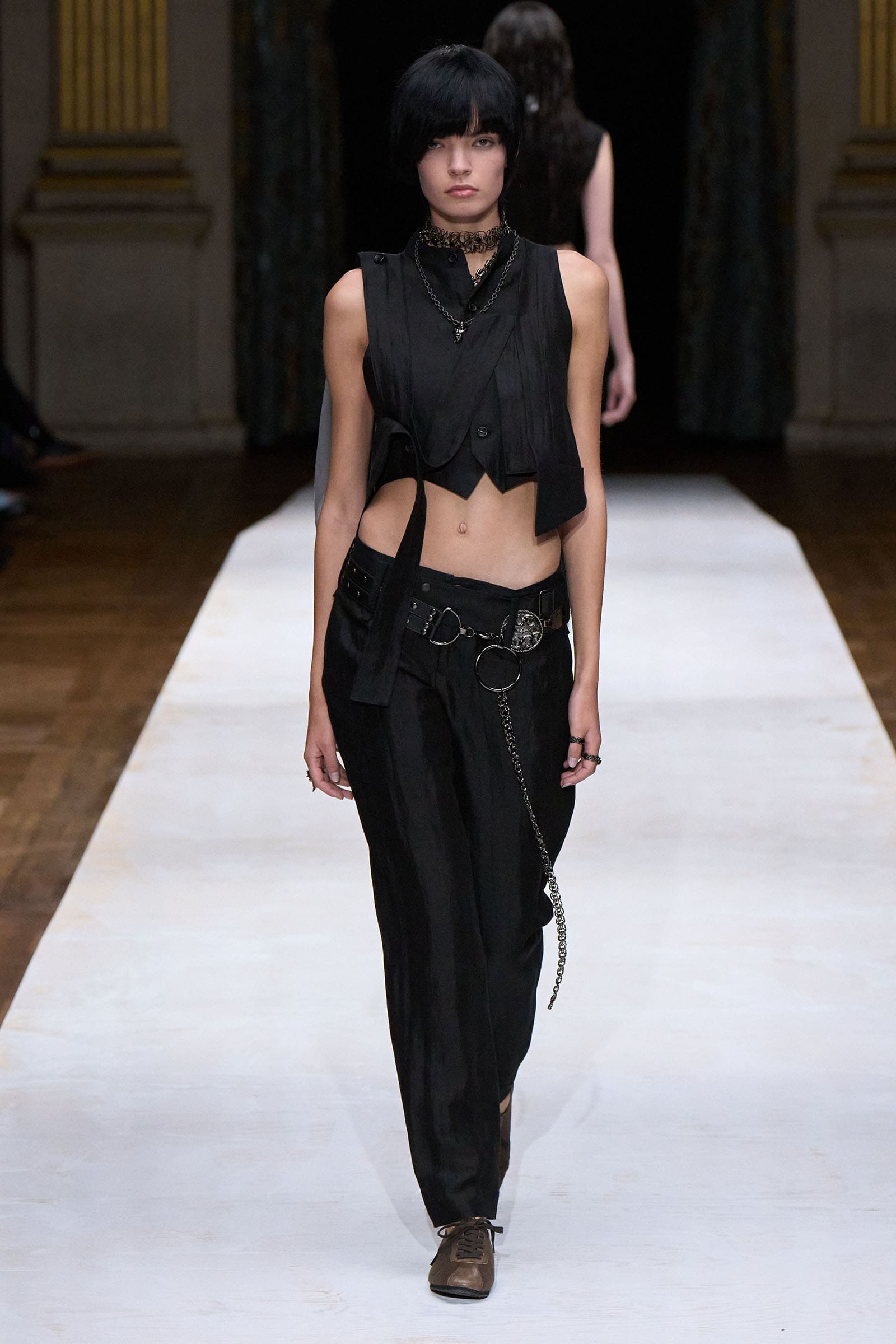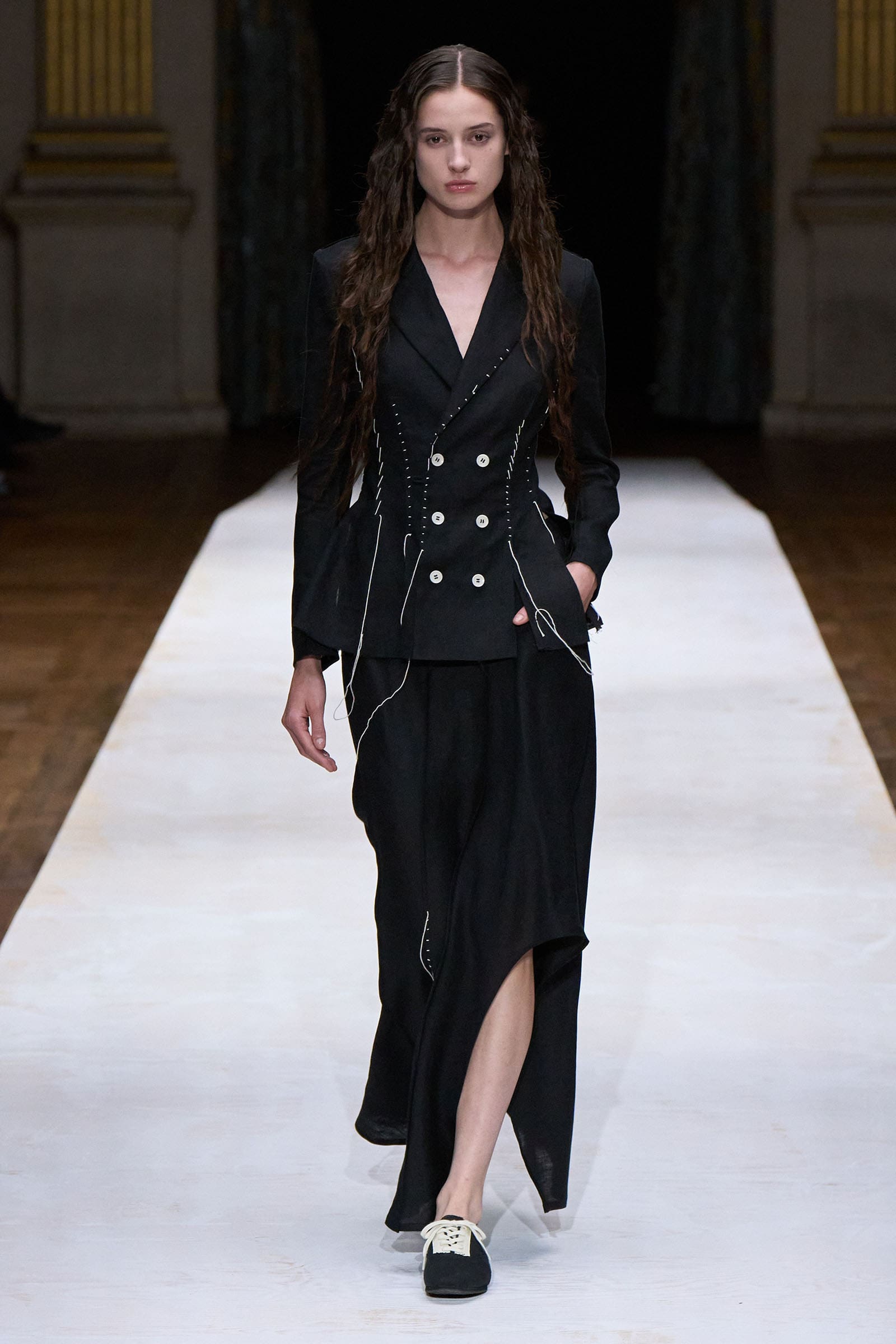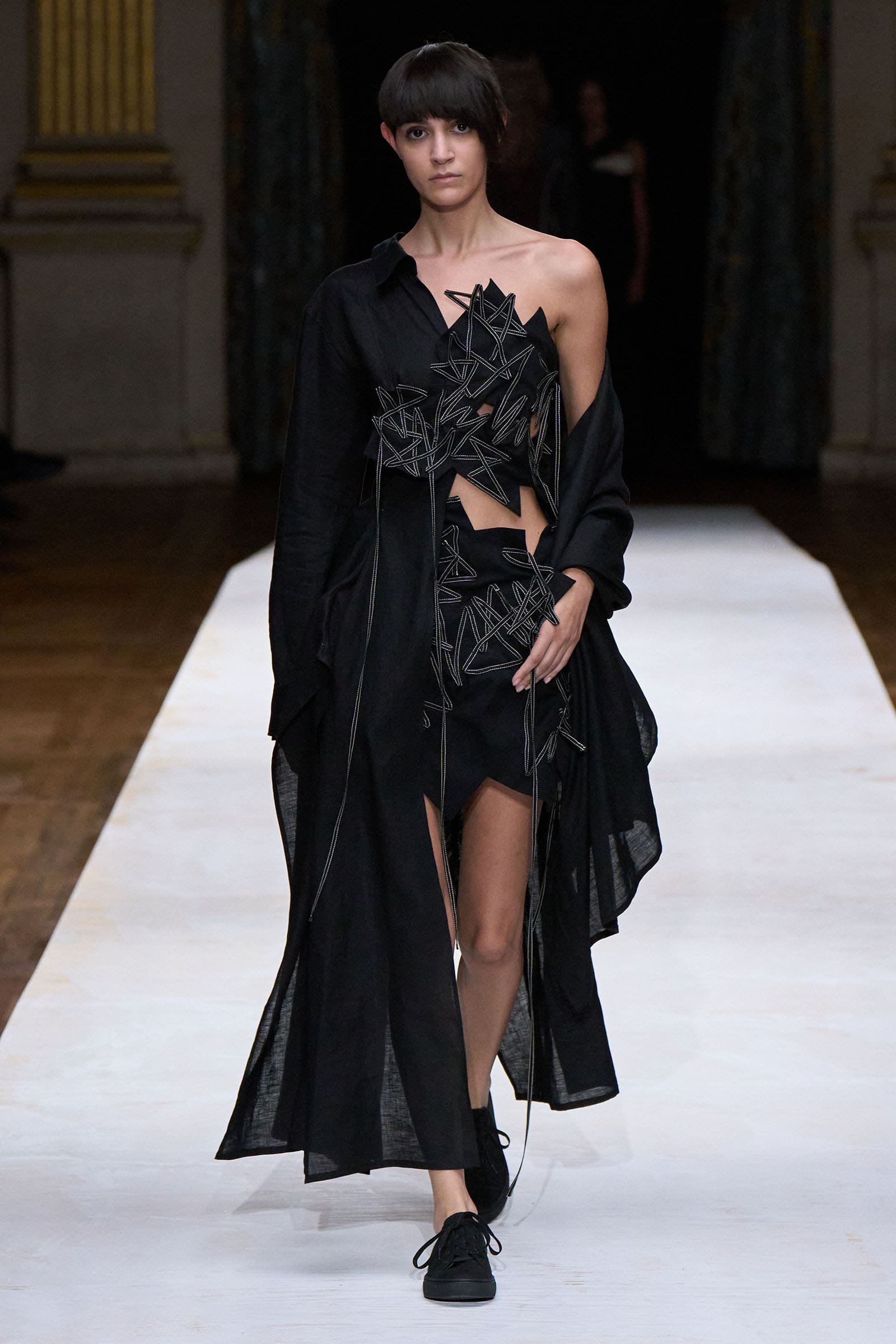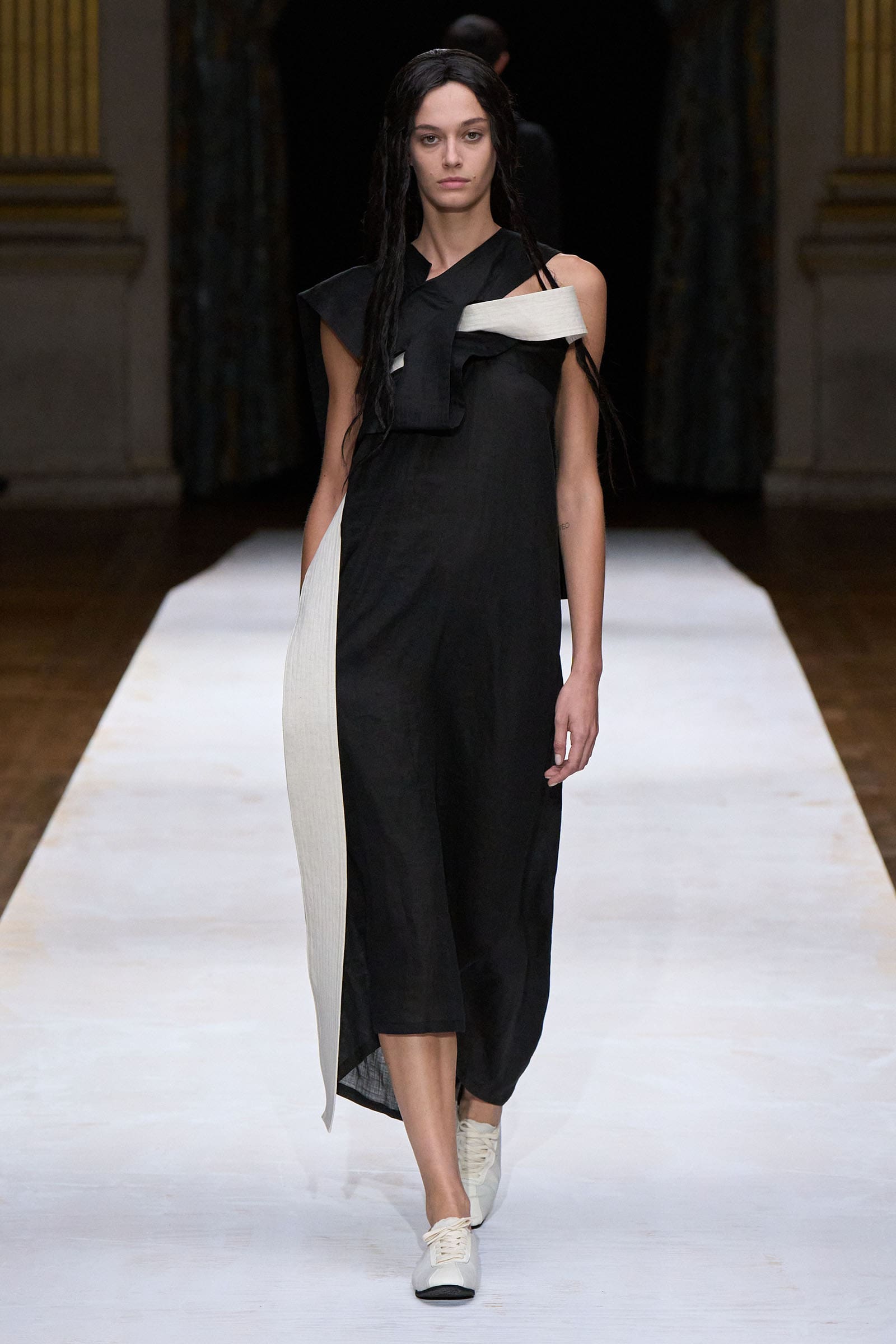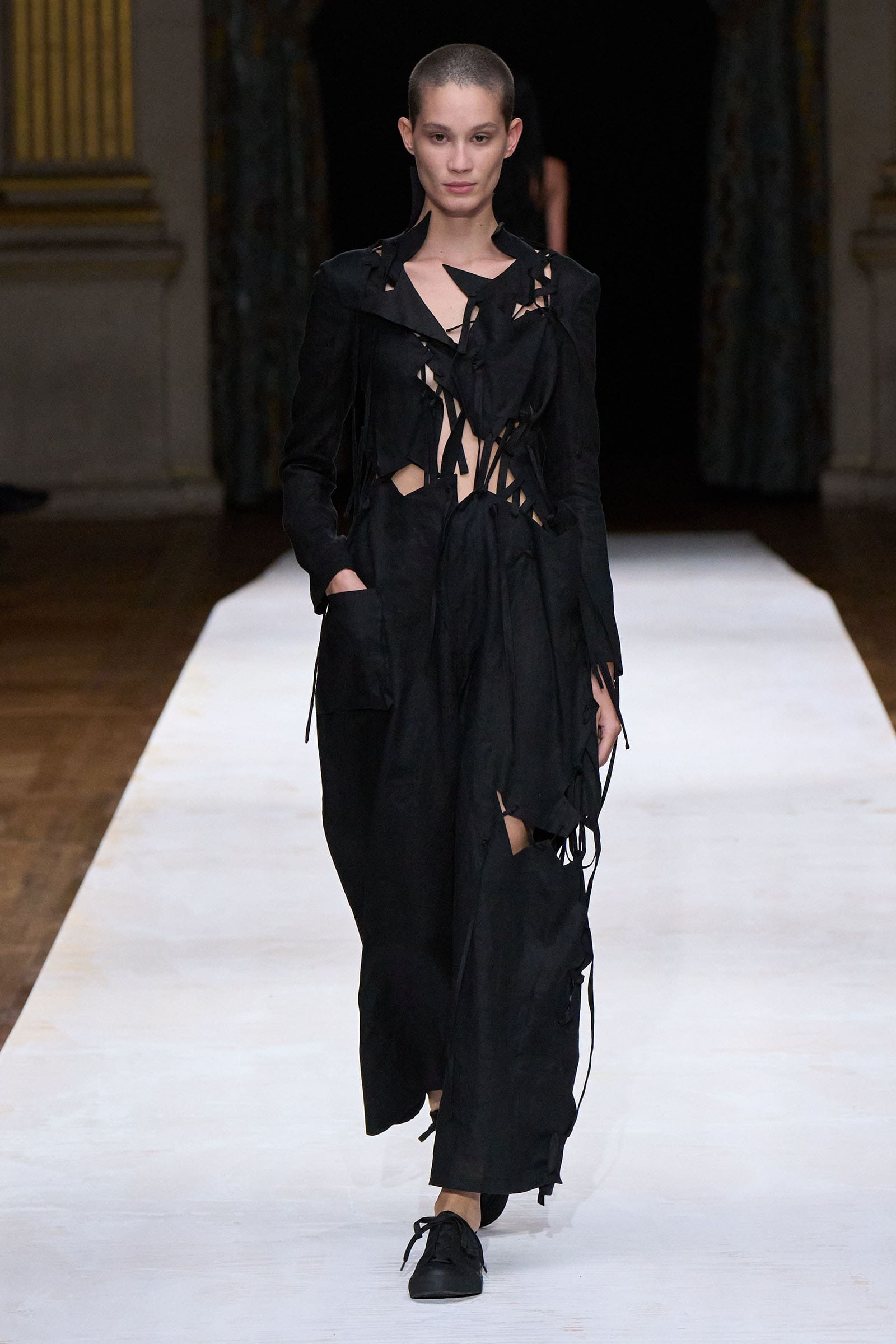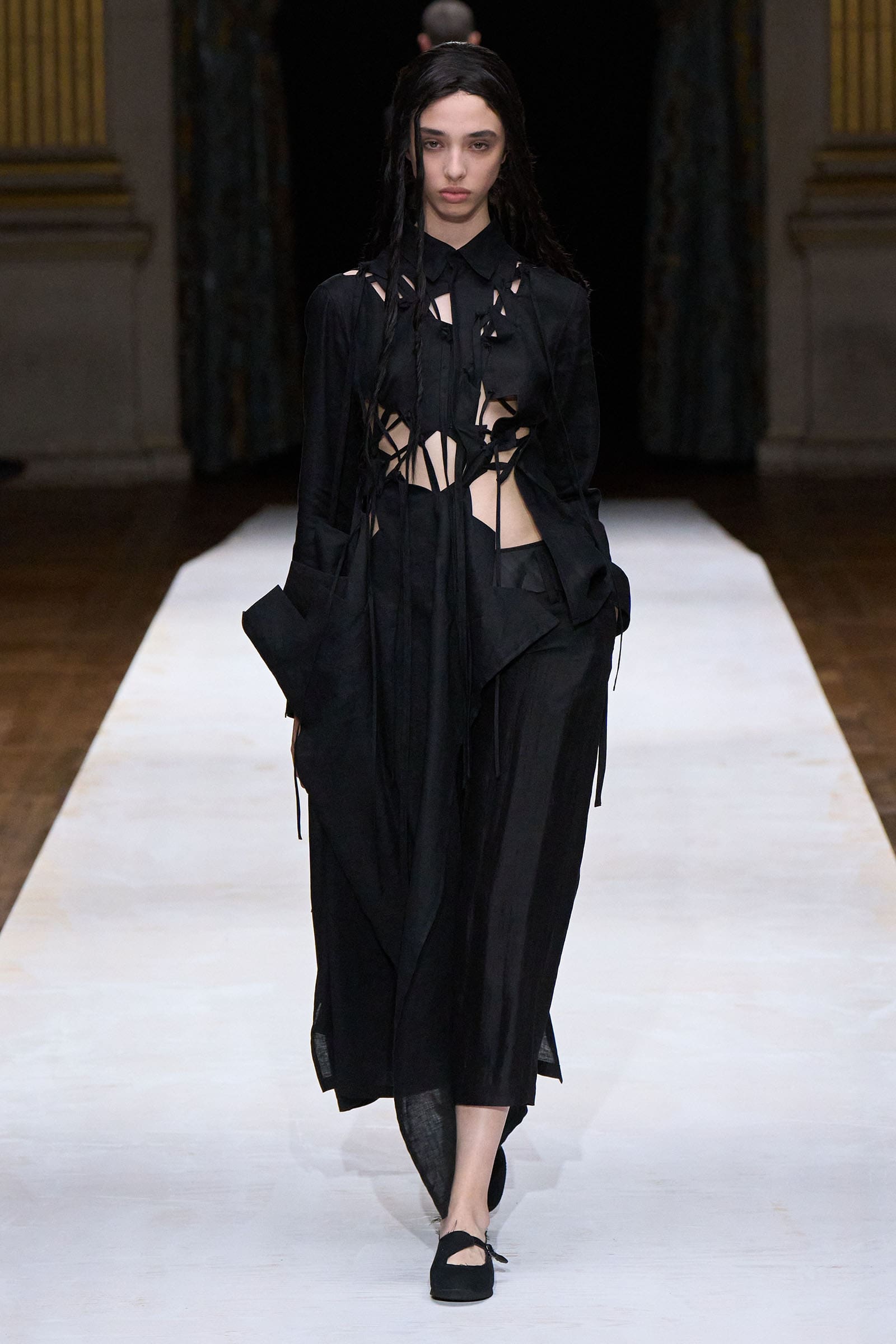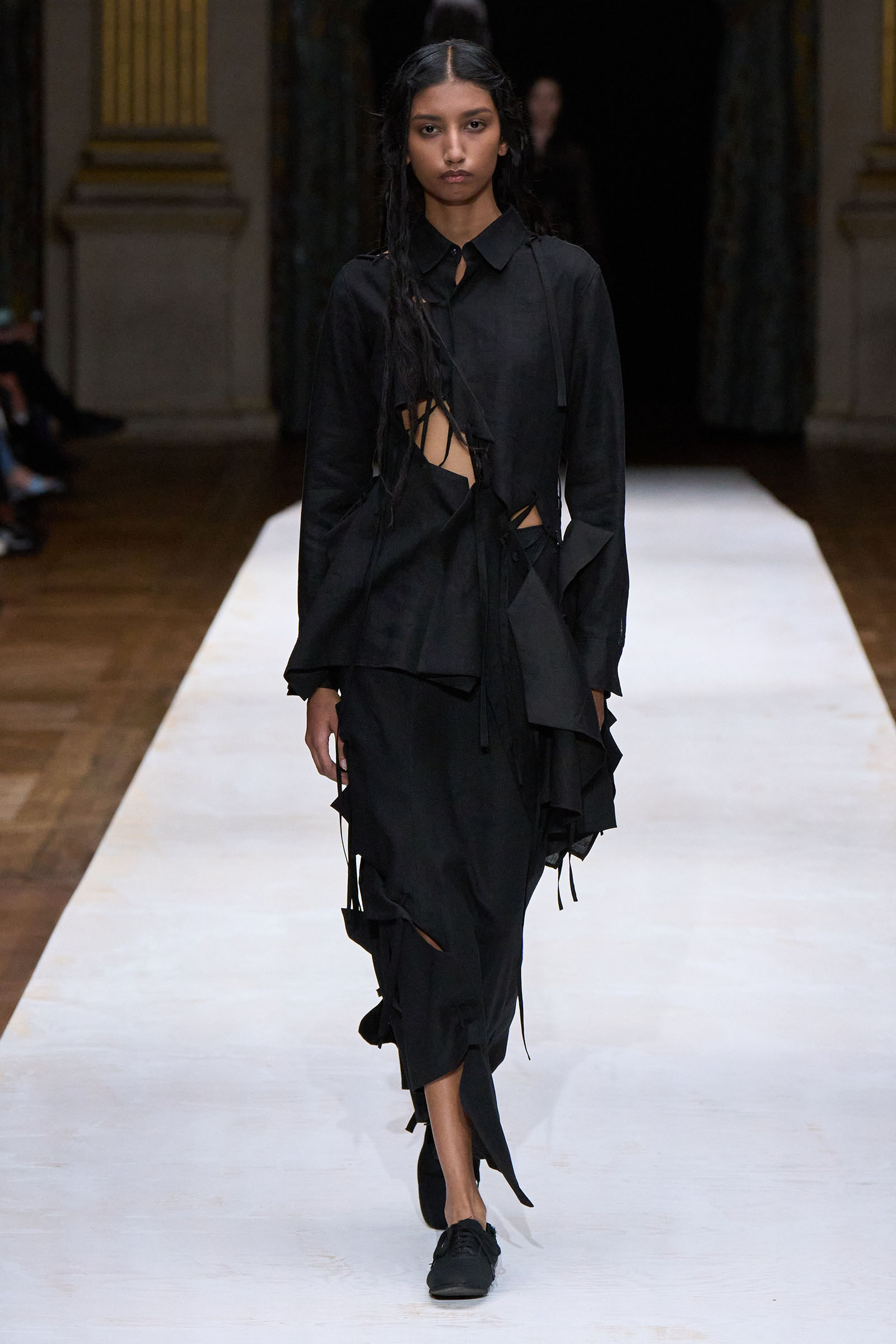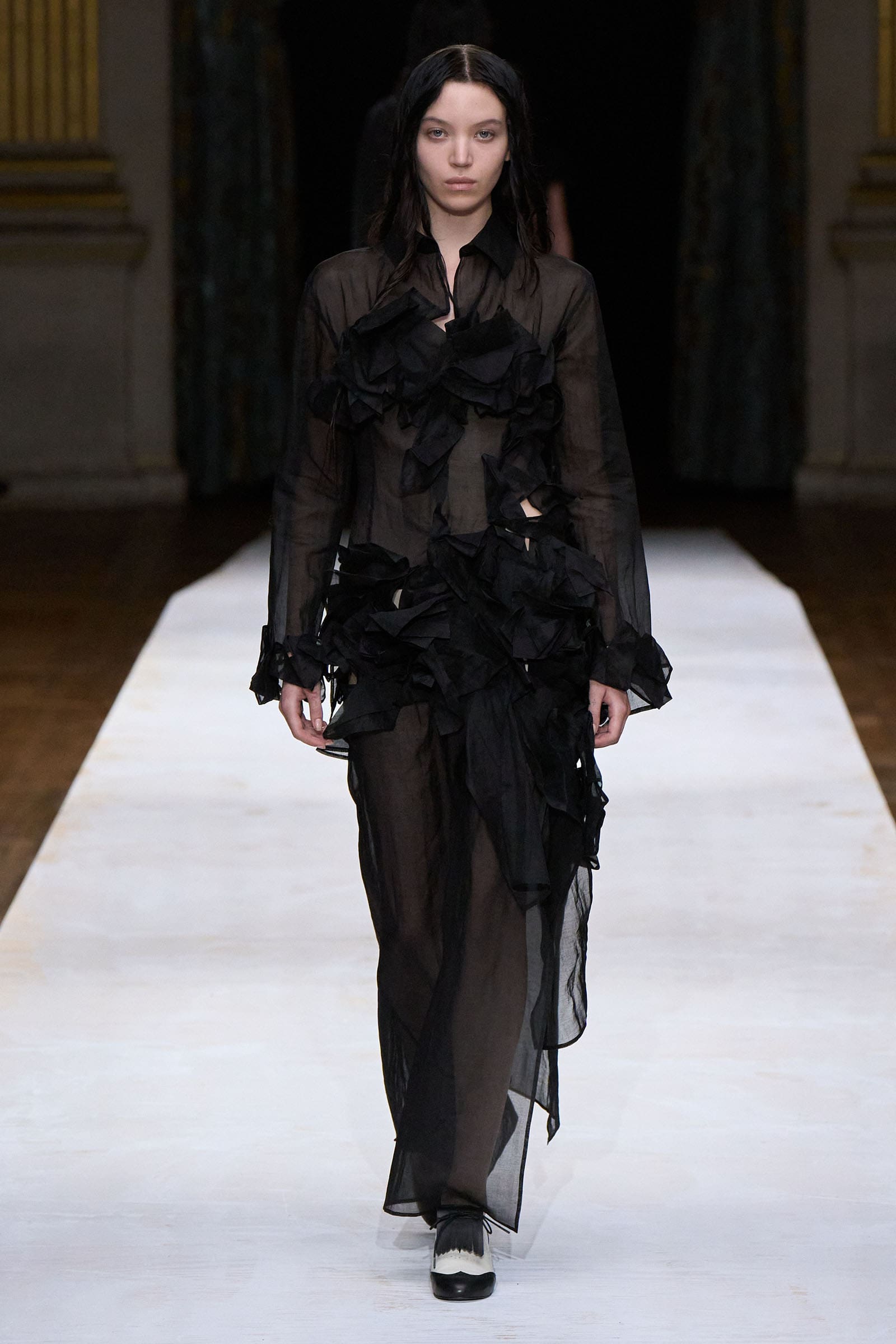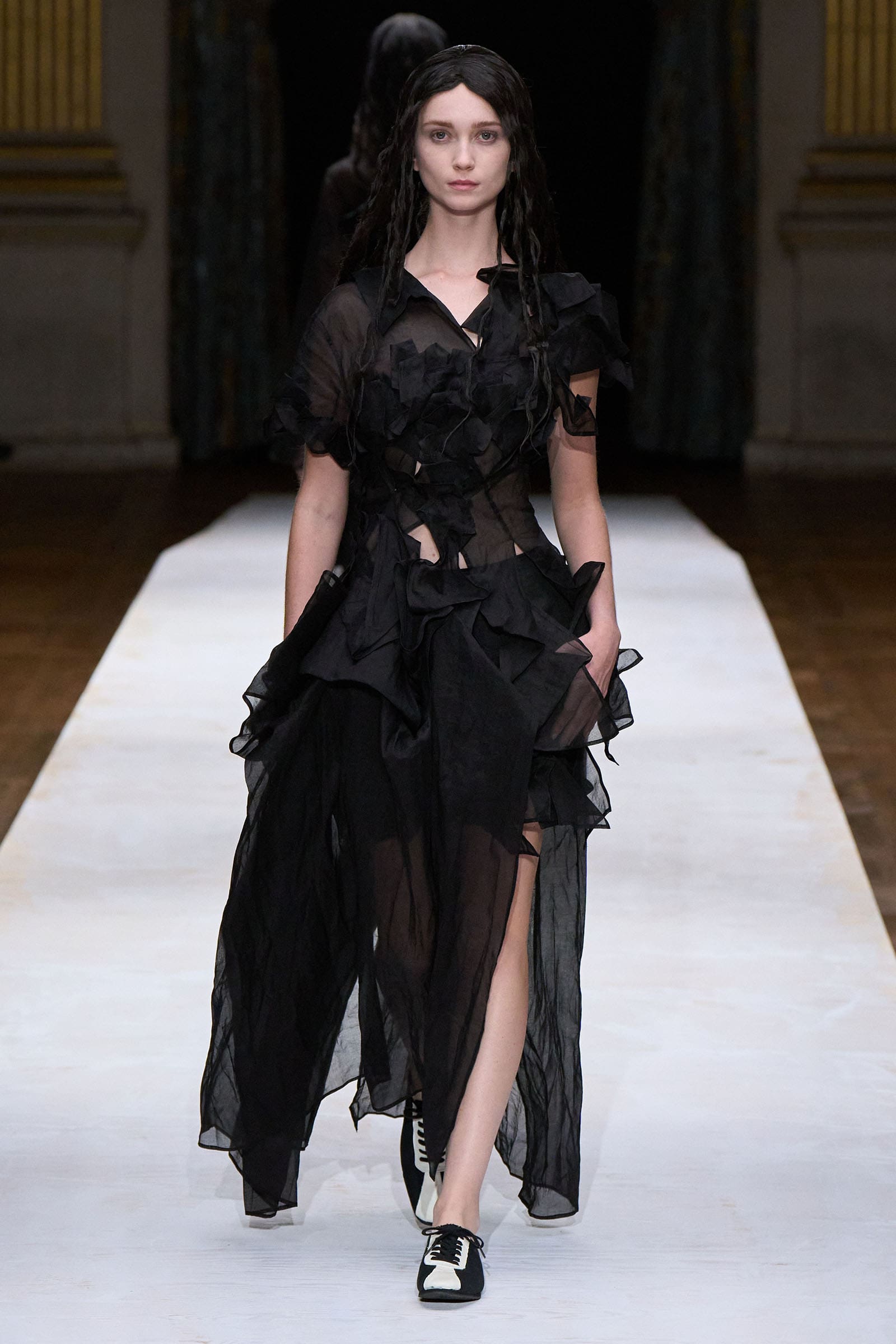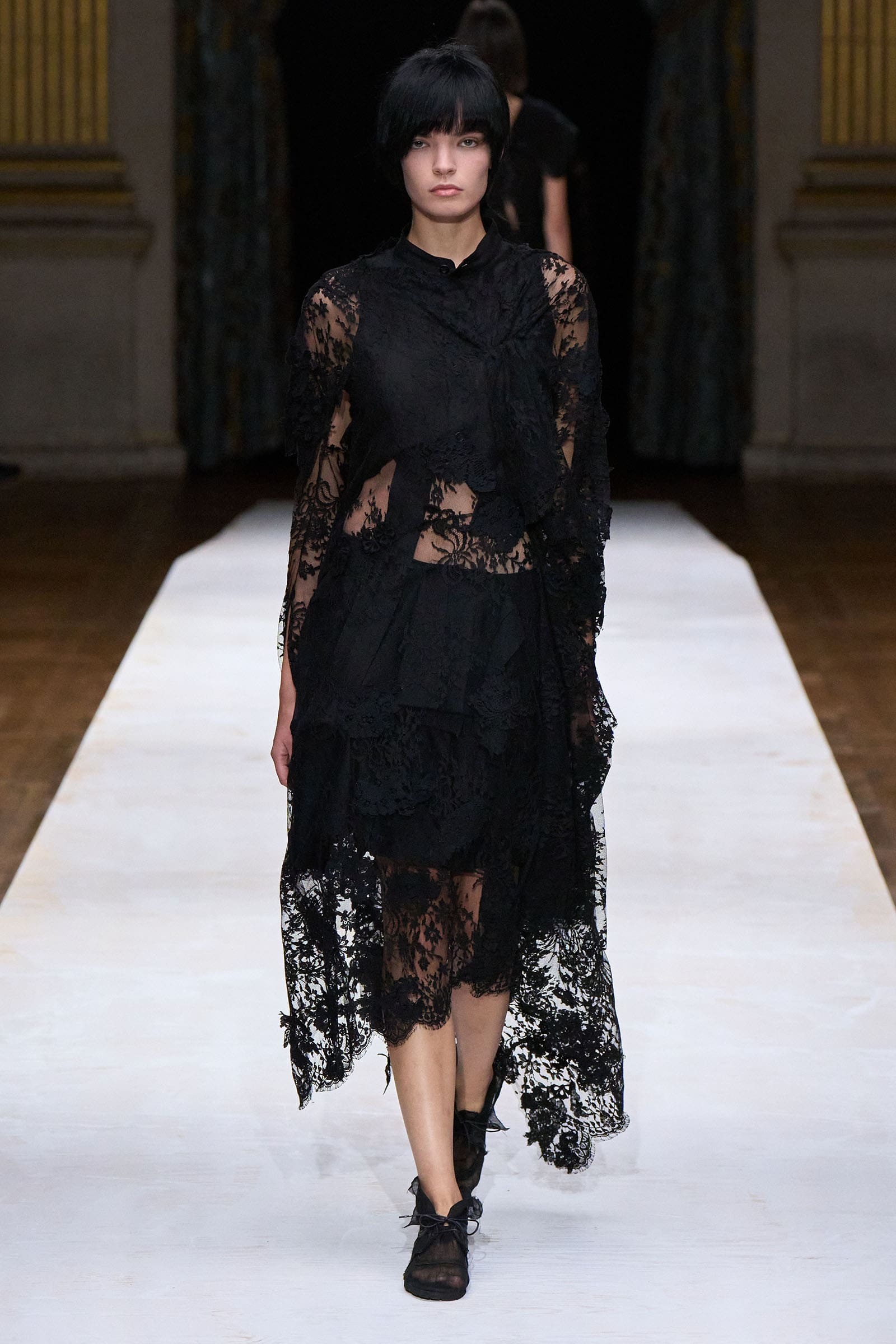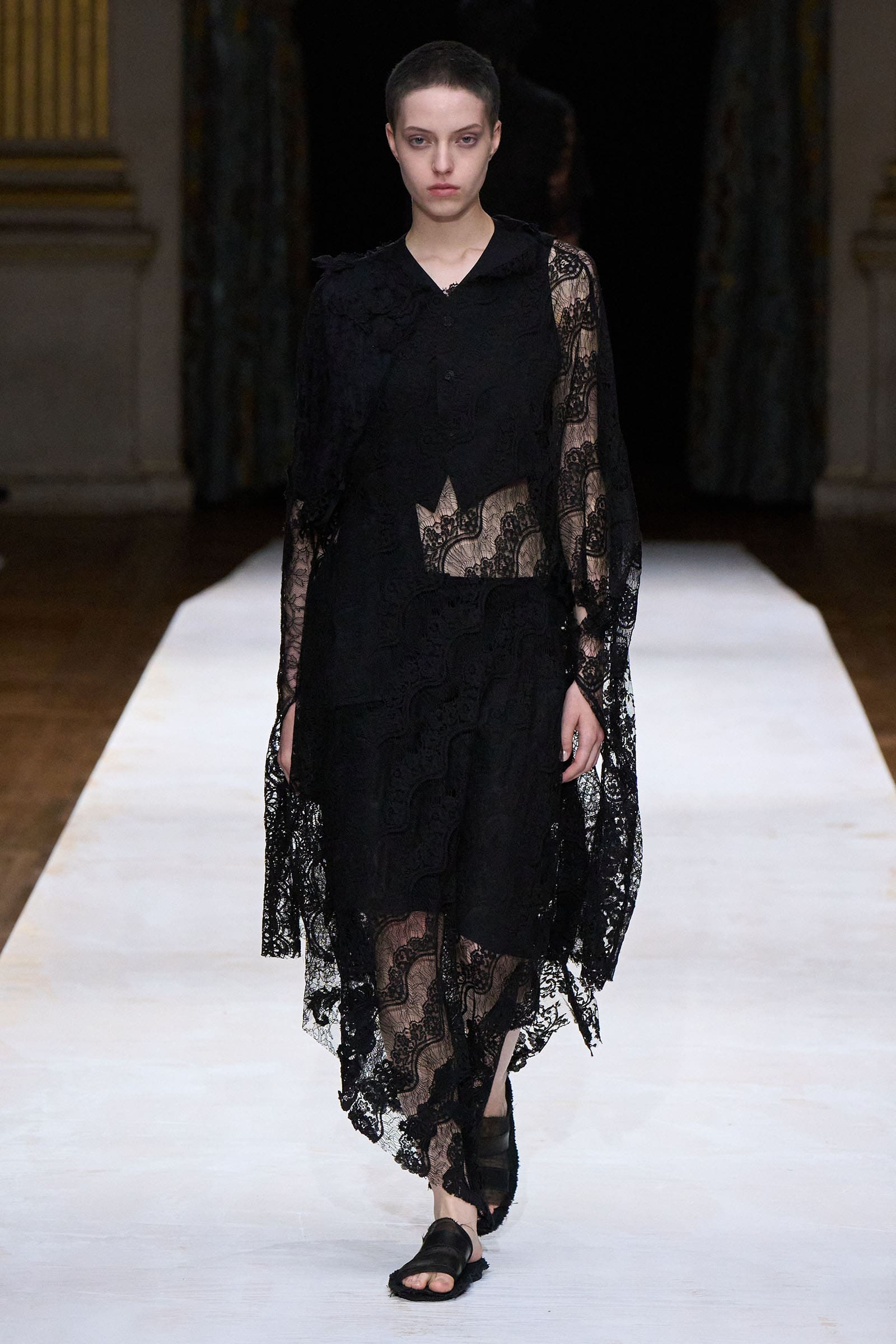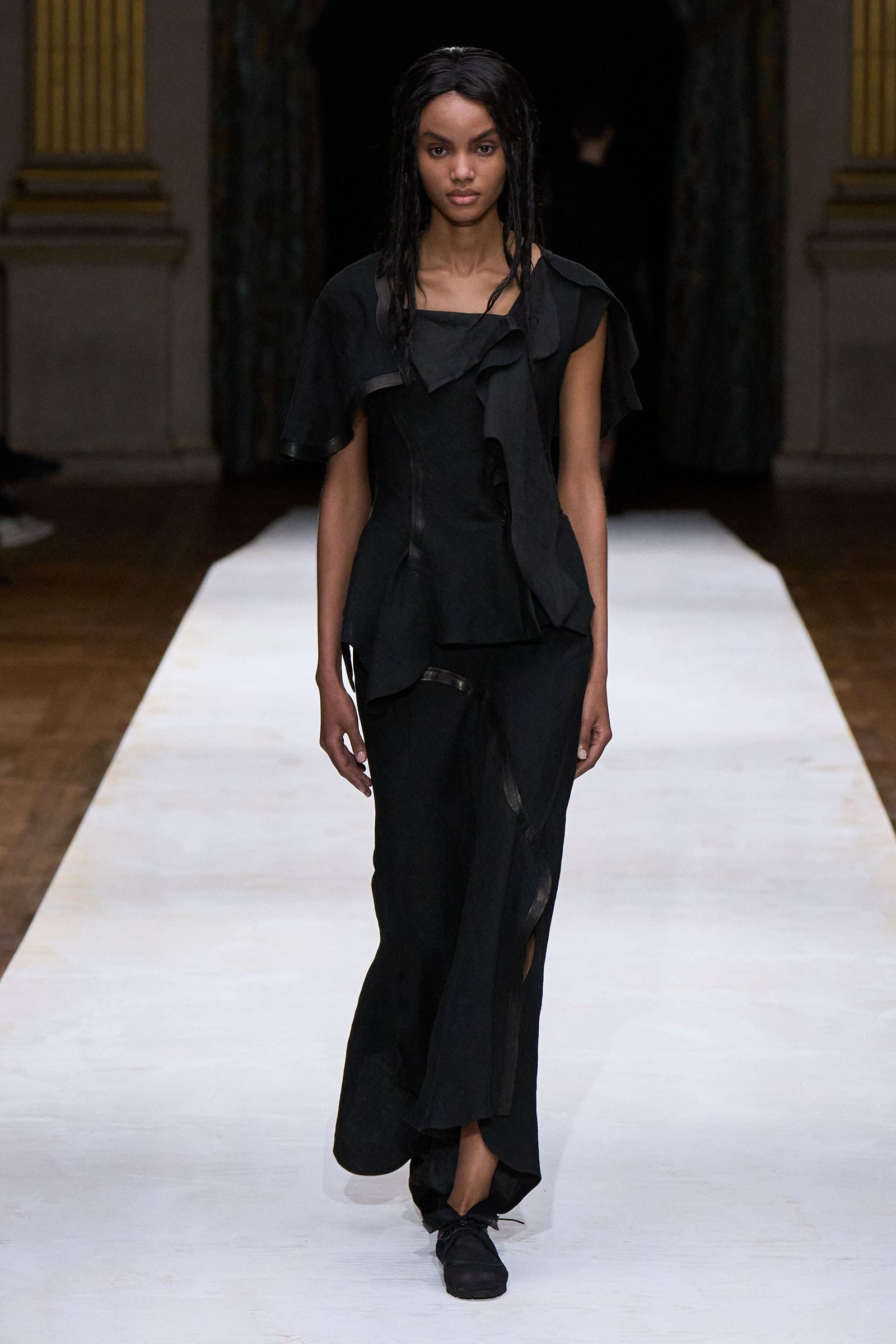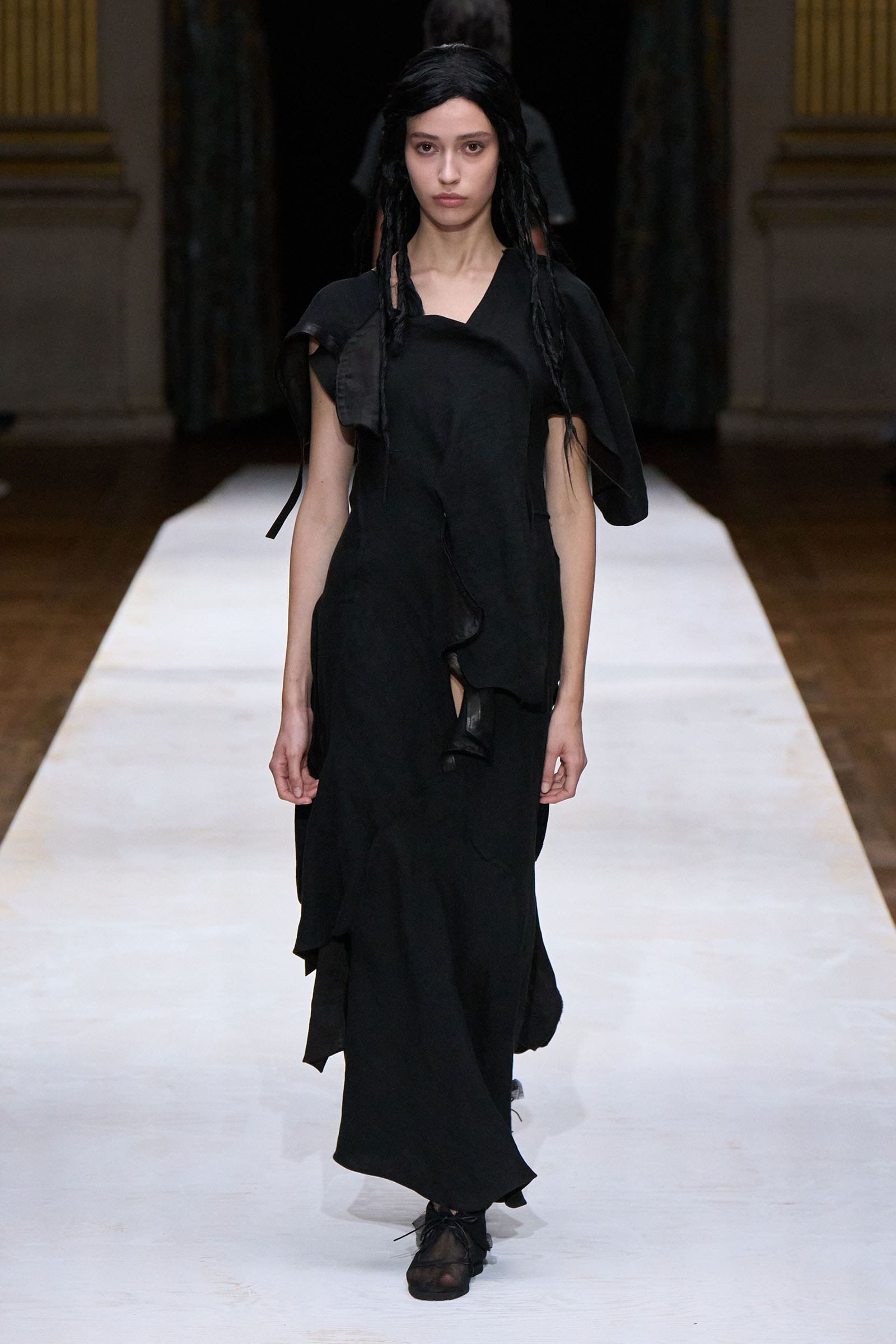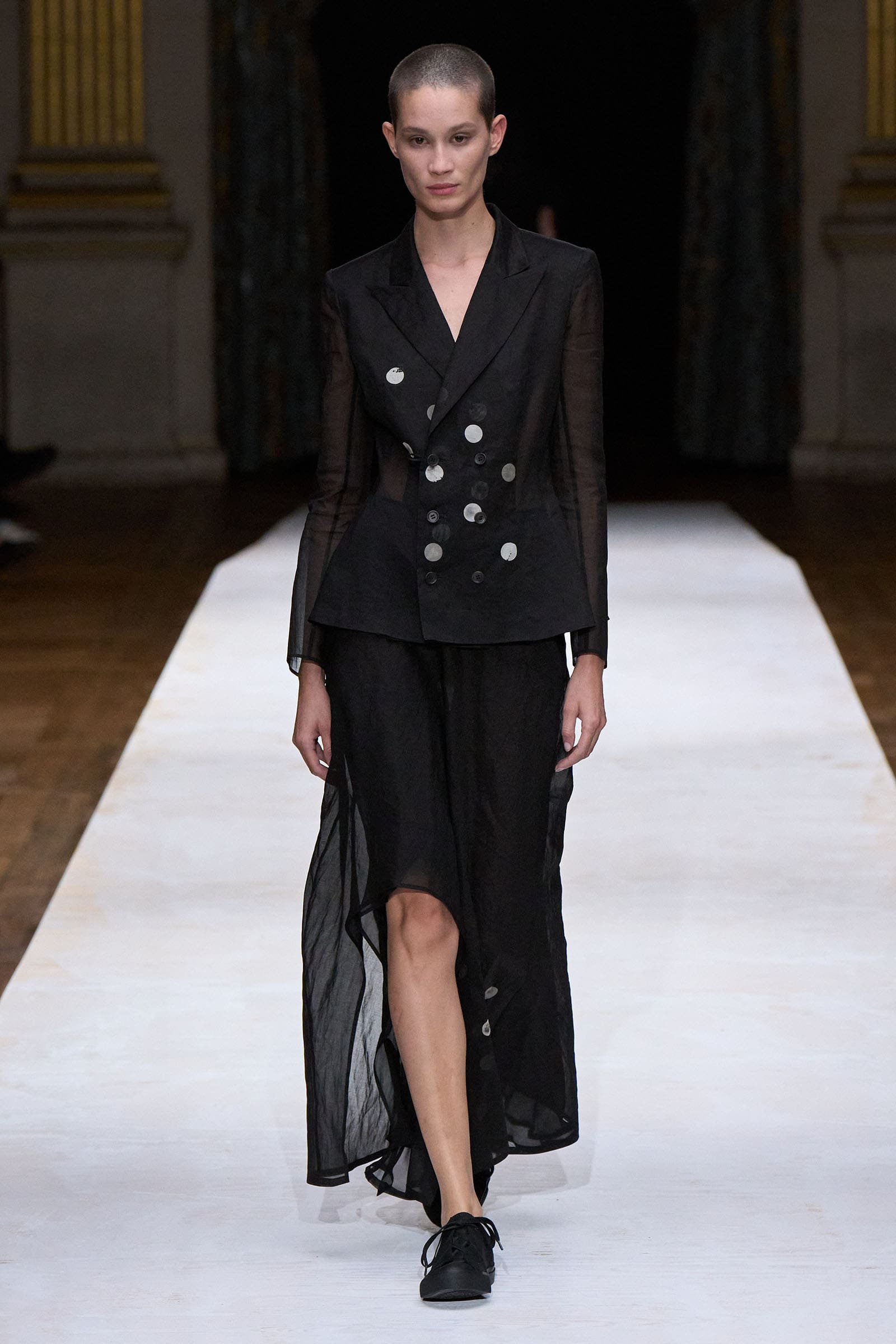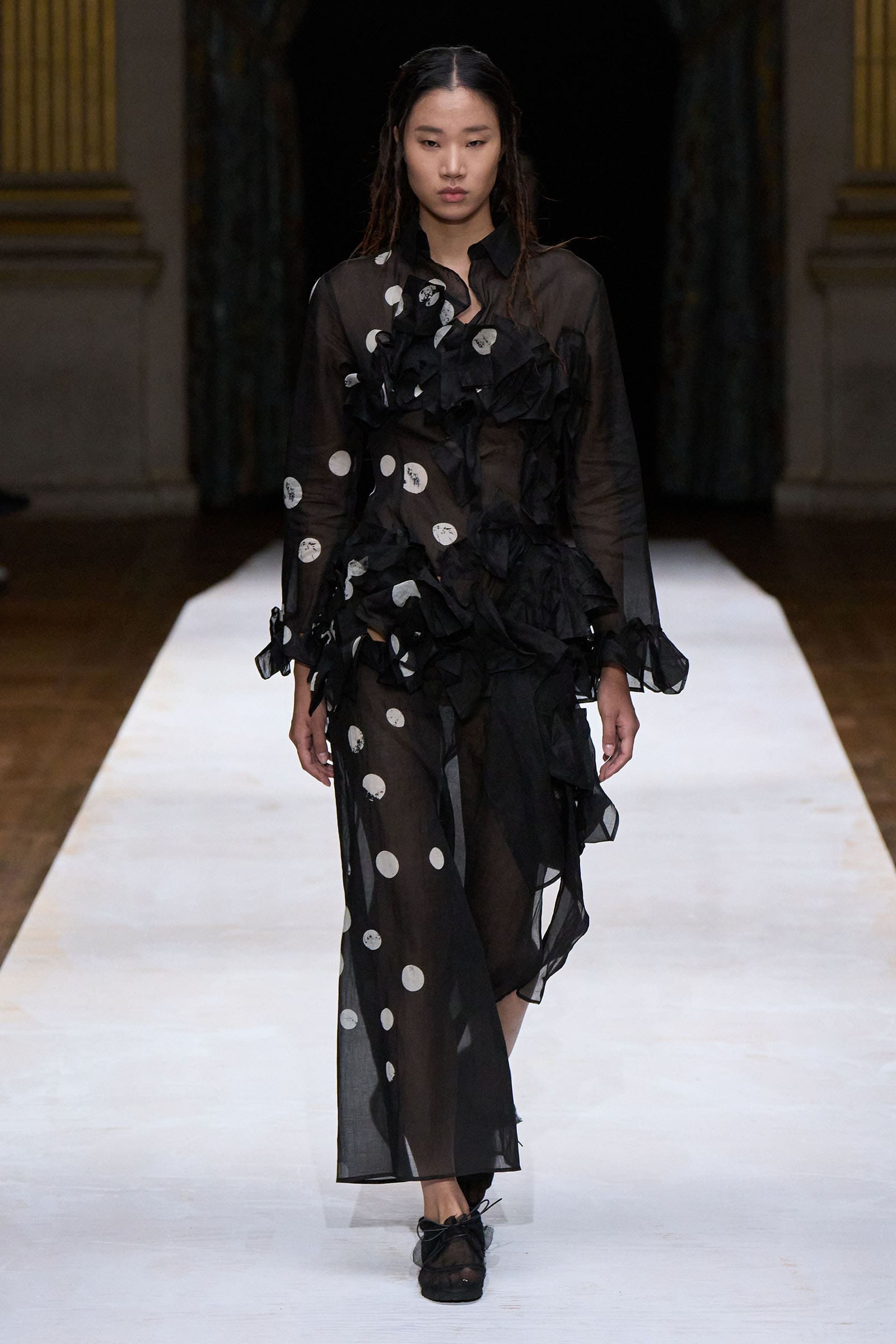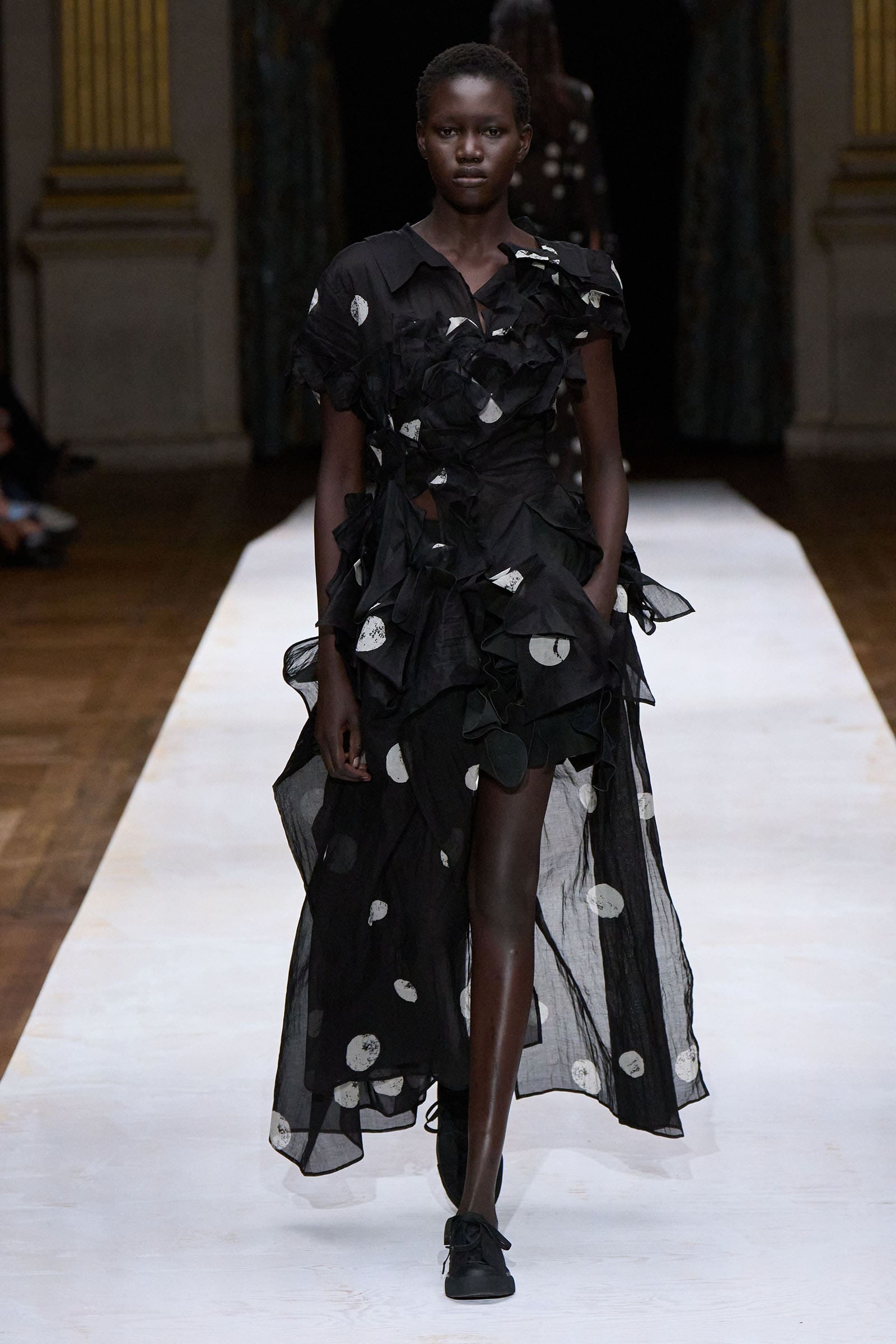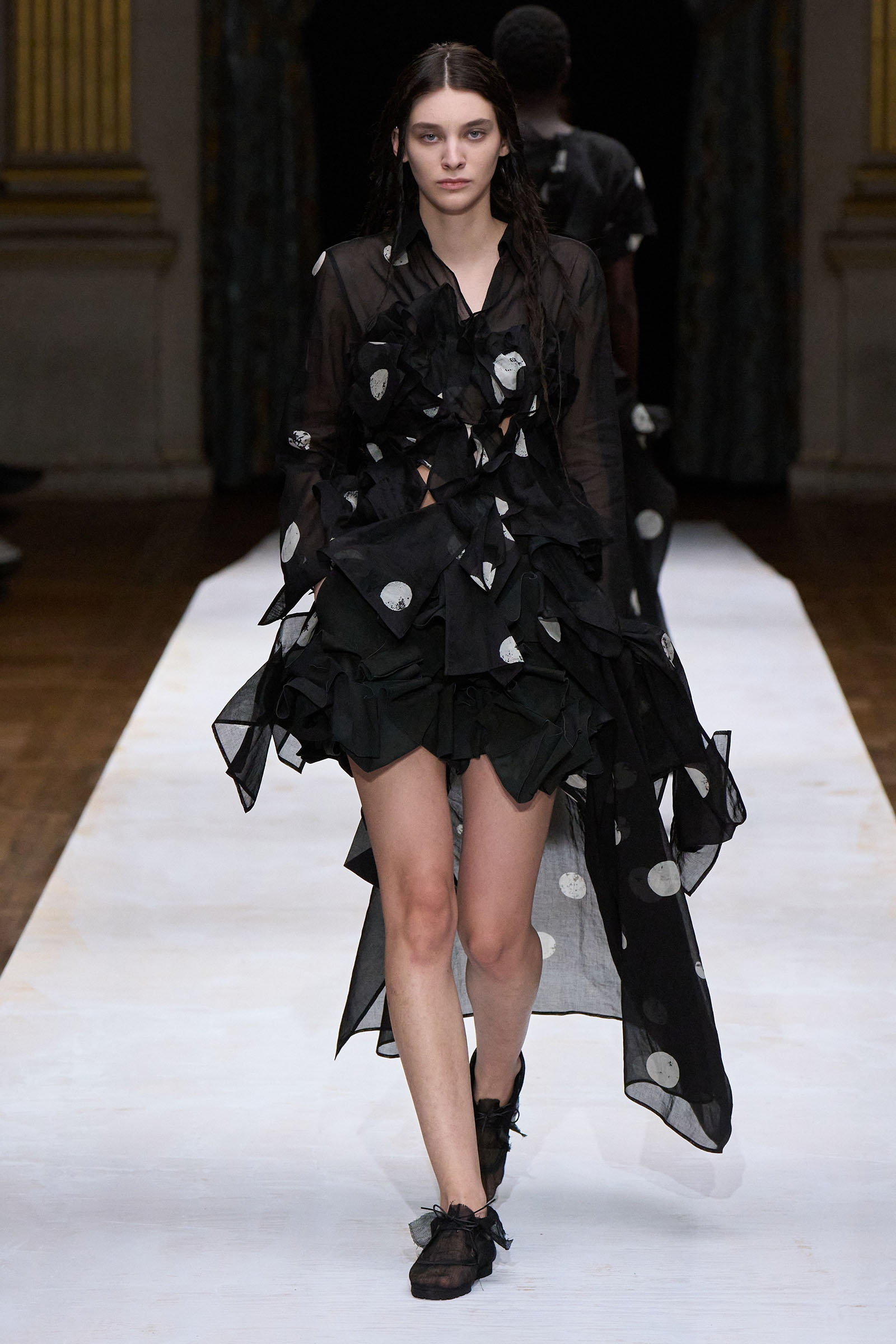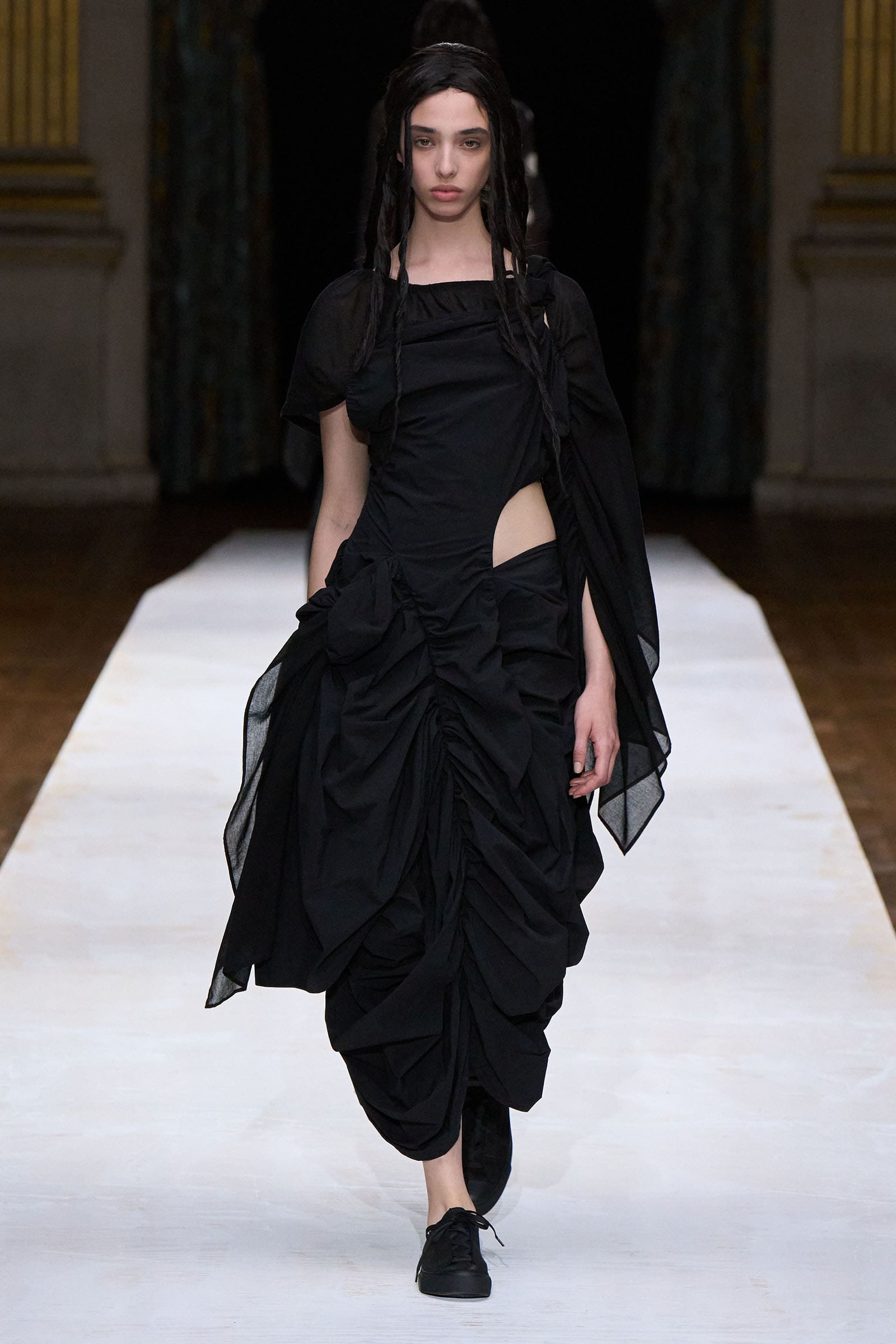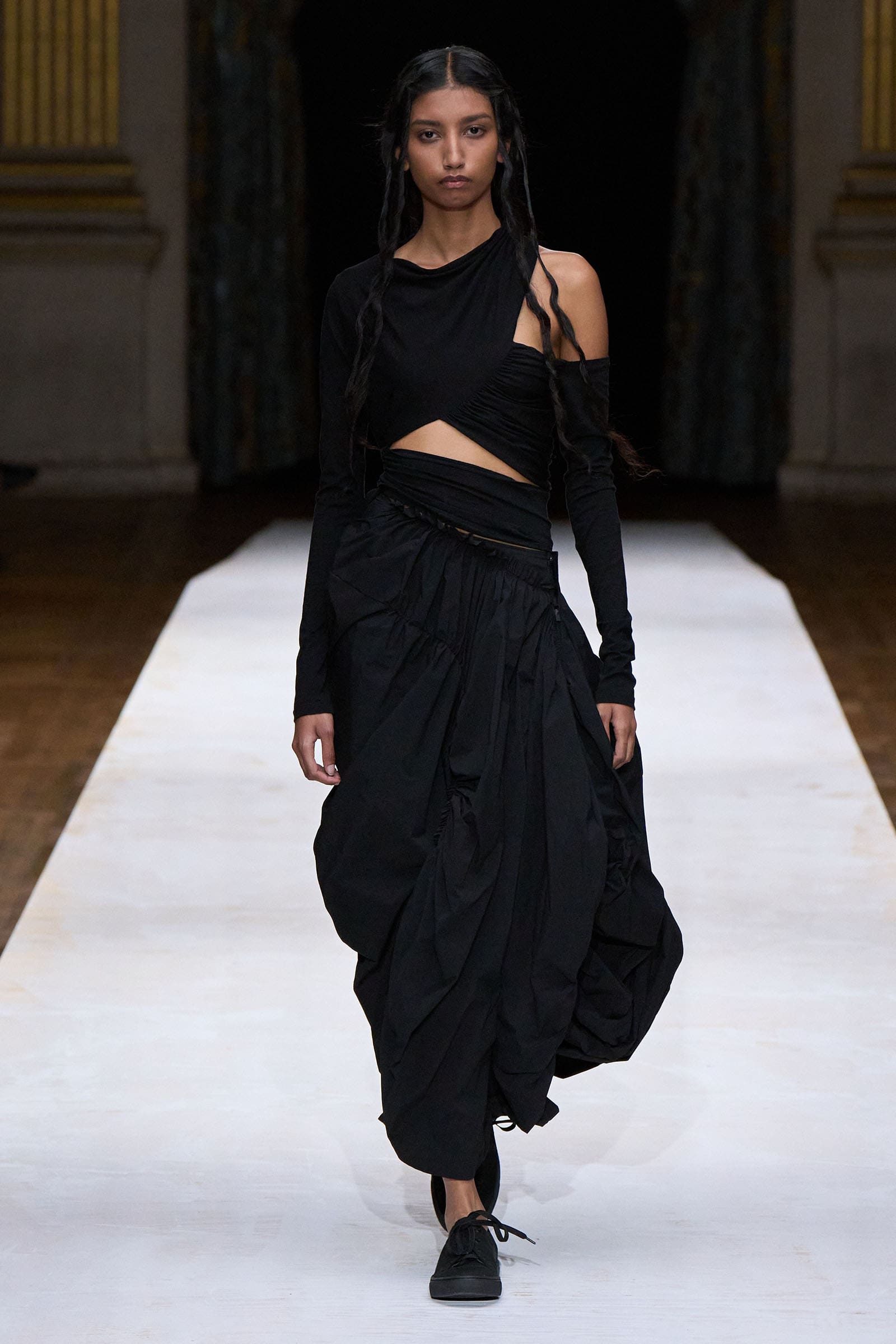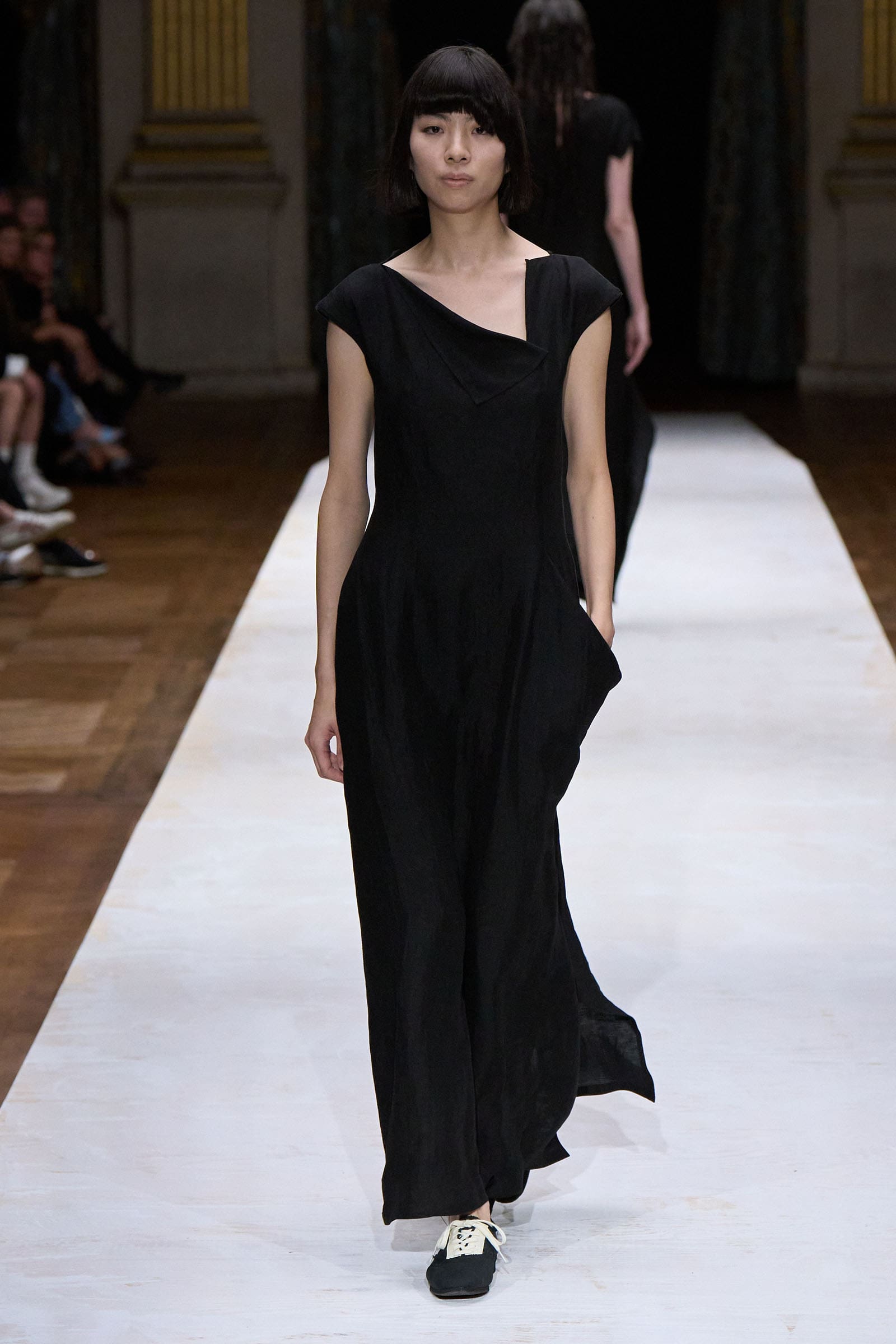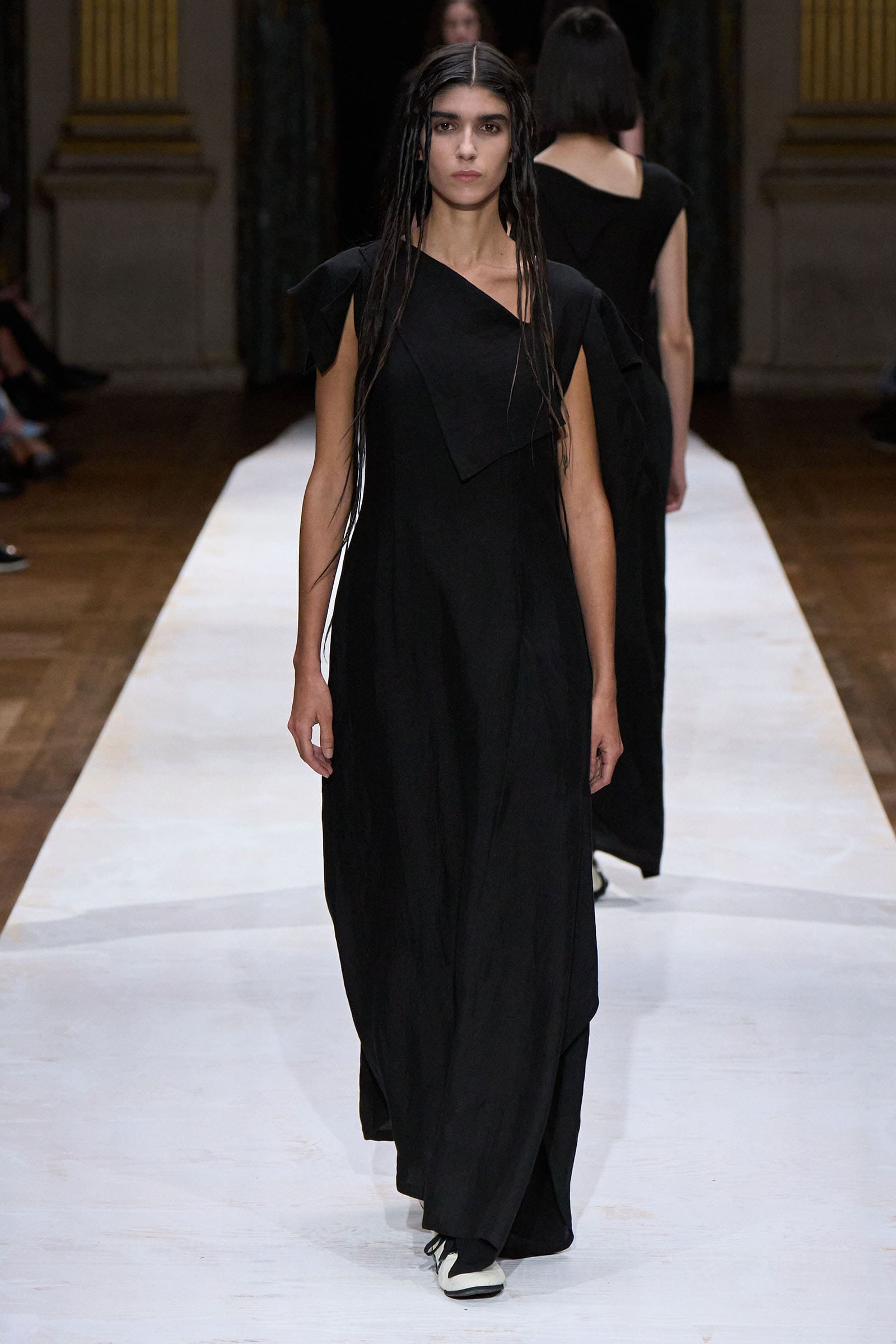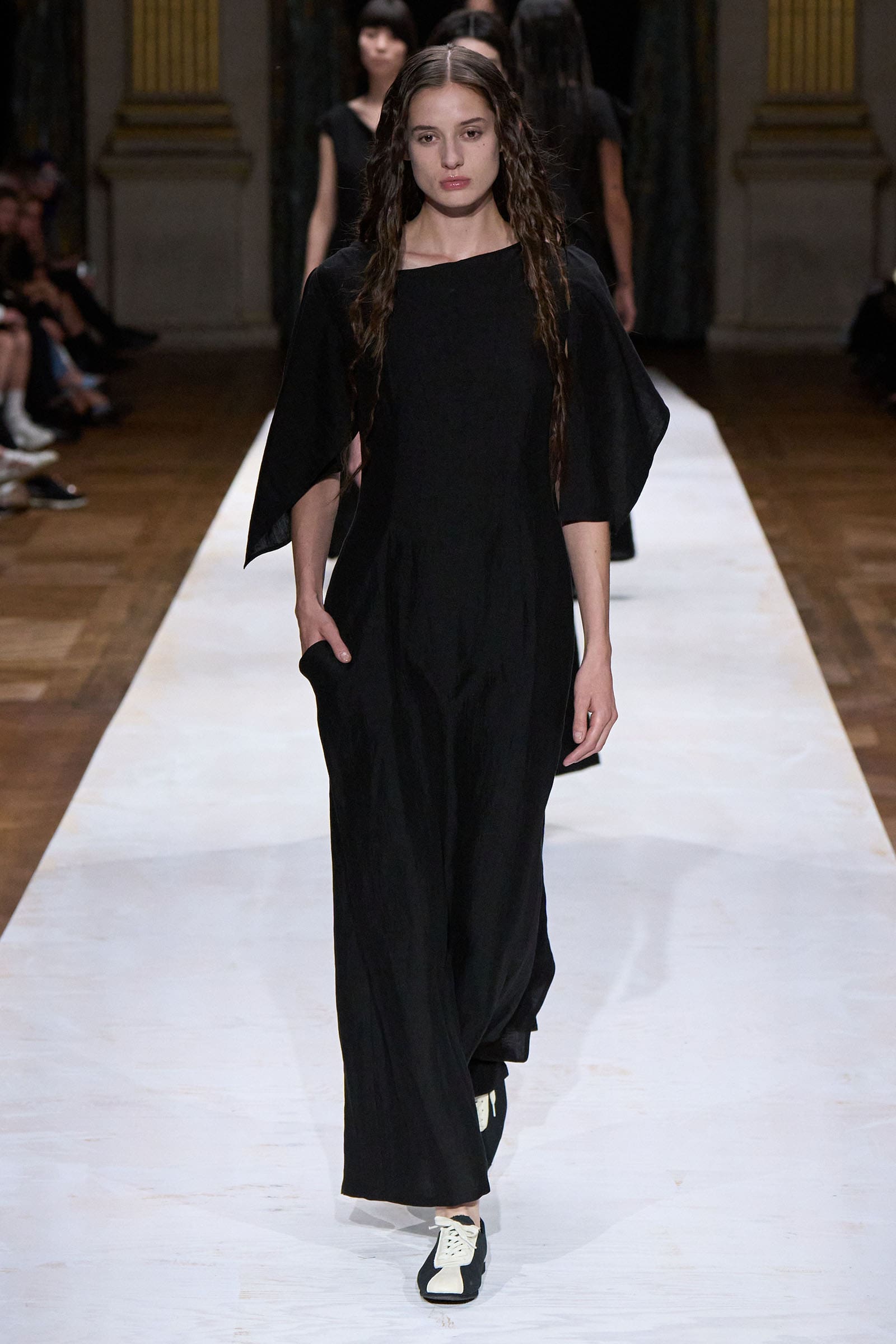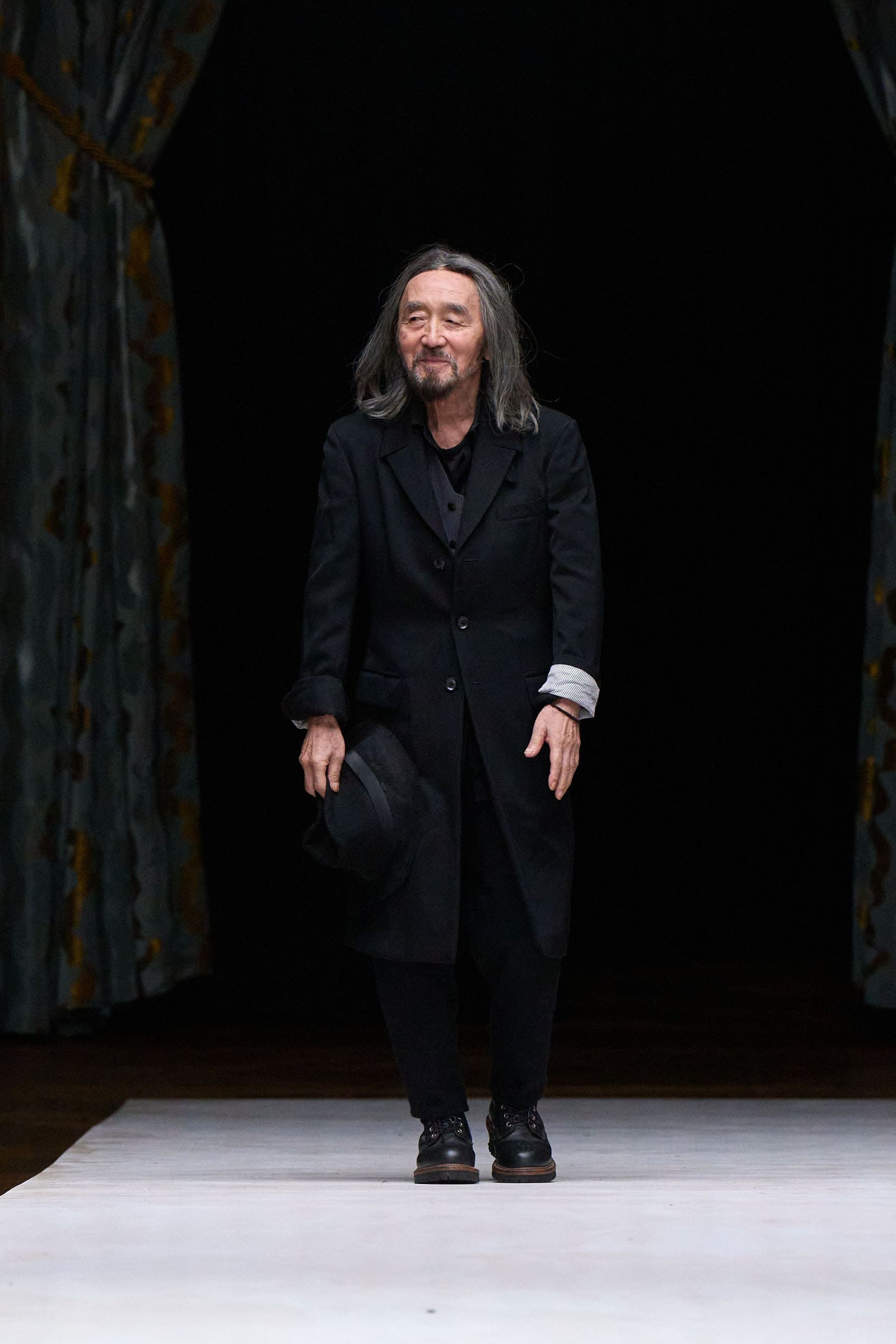
He may not want people to know this, but on October 3, Yohji Yamamoto will turn 80. The collection he presented this evening signaled that his ardor to create is undiminished. And in part because he has been at it for 40-plus years, the audience he attracts to the ornate salons of the Hôtel de Ville come with their reverence.
His admirers can range from institutional heavyweights to fellow non-conformists. Juergen Teller and Kid Super’s Colm Dillane stood out in the front row, while Laurence de Cars, director of the Louvre, Trudie Styler, Max Vadakul, and Guram Gvasalia were among the well-wishers backstage, where Yamamoto explained that, despite a career defined by avant-garde design, he hates looking back to his own work.
And yet, this experimentally rich lineup suggested that he is not opposed to looking back to the canonical couturiers. Citing Chanel, Givenchy, and Balenciaga, he said he wanted to examine and remix their codes in his distinct way. Although there were familiar silhouettes accented with spectator-style footwear and chain link belts boasting double Ys, it wasn’t about homage, as it was in 1997 when he did an entire collection dedicated to Chanel.
From the opening—restrained black silhouettes over white shirts with peaked shoulders—to the more elaborate juxtapositions of light suiting cloaked in delicate lace further on, this was more like a reminder that fashion can feel original even as it iterates upon existing ideas. The fact that he sung a cover of The Beatles’s “Come Together,” riffing on the recognizable guitar chords, as part of the soundtrack, further drove this home (side note: someone really needs to produce a Yohji album).
To most eyes, the Yamamoto of today may not appear fundamentally different from five, 10, or 15 years ago. But actually, he is indefatigable, and the newness of his deconstructed silhouettes and relaxed reworkings of historical dress is in the nuance. “When I start designing, I don’t know whether something will be new,” he said.
It seems that he has, however, grown tired of color, and he reverted back to black this season and explored its limitless applications much the same way Pierre Soulages would consider the light and dark of black throughout his paintings. There were looks so layered with pleats and tucks that they took the black into multi-dimensions and then there were varying applications of sheer fabric—right down to the derbies faintly revealing the feet—that resulted in beautiful, weightless shapes. Plus, as he noted, black “makes a strong connection with the women’s body,” gesturing the same angled necklines of the final looks across this writer’s neckline.
The ever-present awe of Yamamoto’s designs is that they raise a multitude of questions without providing answers. Were the loose threads, origami-like volumes, and irregular patterns of polka dots the result of spontaneity, or were they each a studied flourish? What’s clear is that, despite the signature slow stride of his models, Yamamoto himself still shows no sign of slowing down.
This article was originally published on Vogue Runway.



